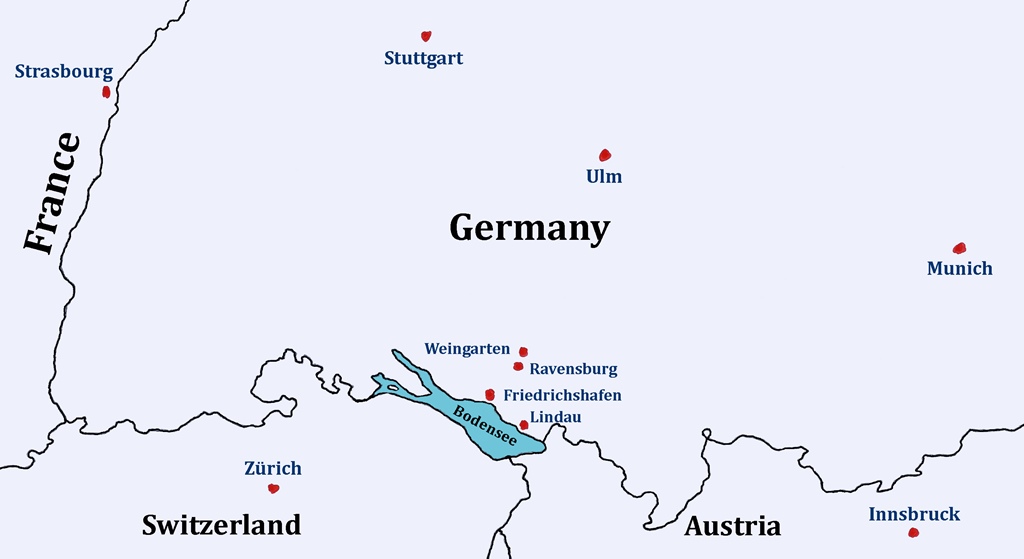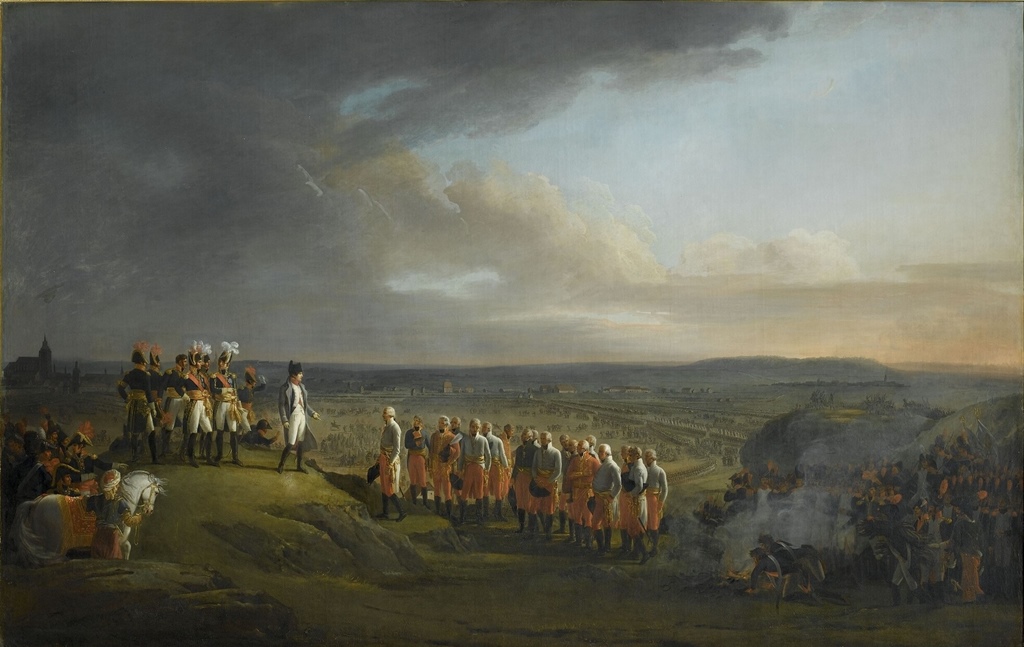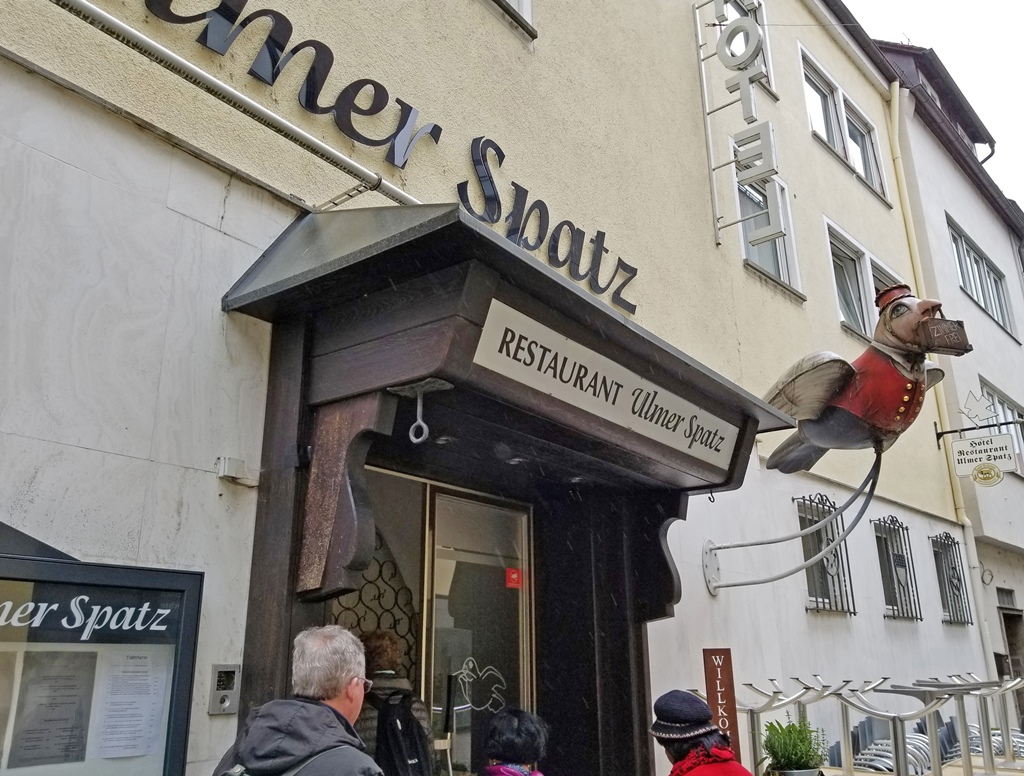Map of Swabia
Fifty-three miles to the north of Weingarten (or, more to the point, seventy-three miles
north of Lindau, where we’d spent the night) is the metropolis of Ulm, a city of 126,000
located at the intersection of major north-south and east-west routes in southern Germany.
It’s situated on the left bank of the Danube River, which in that area separates the
states of Baden-Württemberg and Bavaria, before continuing eastward to places like Nuremberg,
Vienna, Budapest, Belgrade, and eventually the Black Sea. It’s an old city – there is
evidence of a Neolithic settlement in the area from as early as 5000 B.C., and there is
mention of Ulm as a city around 850 A.D. A famous battle was fought at Ulm in 1805, in
which Napoleon was able to trap an entire Austrian army.
Austrians Surrendering to Napoleon at Ulm, 1805
In 1810, Ulm became part of the Kingdom of Württemberg, and the part of the city on the
other side of the Danube had to become a separate city, as it was now in a different
kingdom. This new city was called Neu-Ulm (New Ulm), and it remains a separate
city up to the present day. Ulm’s principal landmark is the Ulm Minster (Ulmer Münster),
which is the tallest church in the world. The most well-known person to have lived in Ulm
is probably Albert Einstein, who was born here in 1879 (the house was destroyed by Allied
bombing in 1944, along with its entire neighborhood; there’s a monument in the house’s
approximate location). The astronomer Johannes Kepler also lived here for a while, back in
the 17th Century.
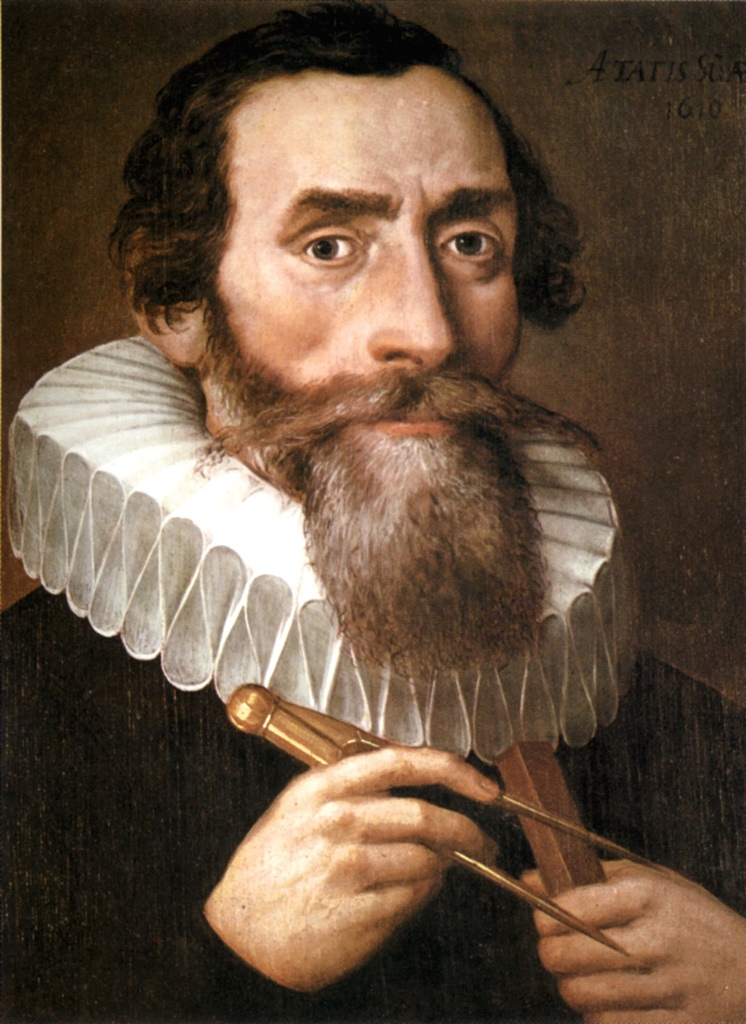
Johannes Kepler, 1610
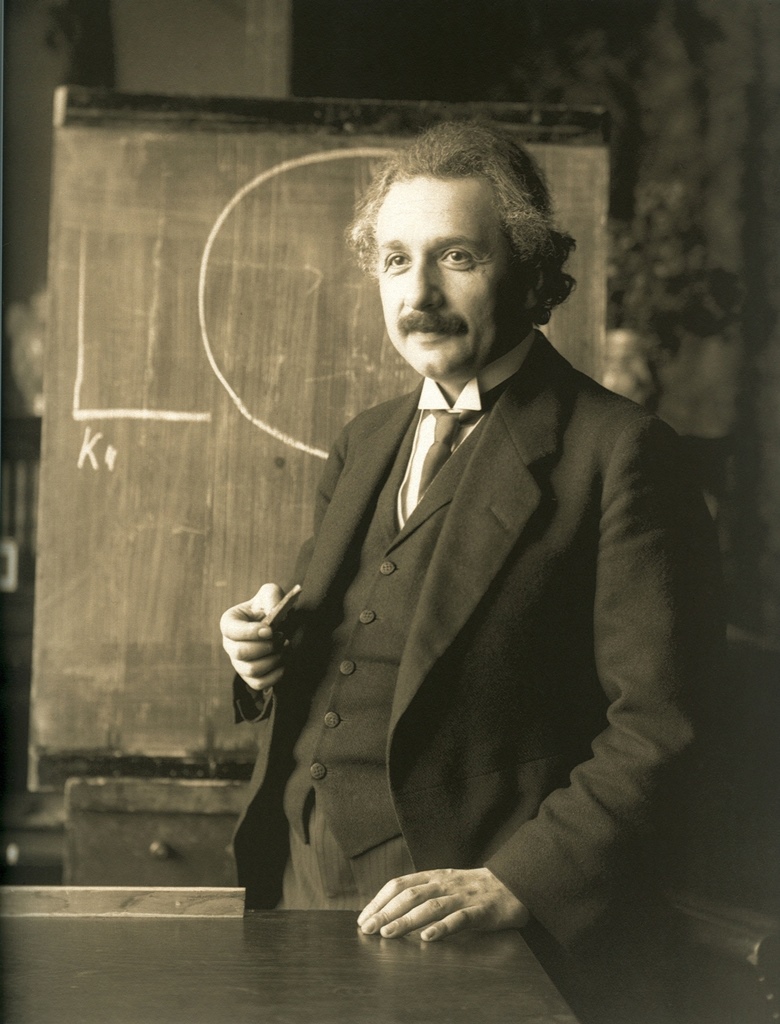
Albert Einstein, 1921
As Werner was driving us up from Lindau, it became clear that the weather would not be cooperating,
as it was gray and drizzly. We parked near the town center and made our way to the
Münsterplatz, the square in front of the Minster. We took a few minutes to marvel at
the Minster in its 530-foot glory, despite the precipitation.
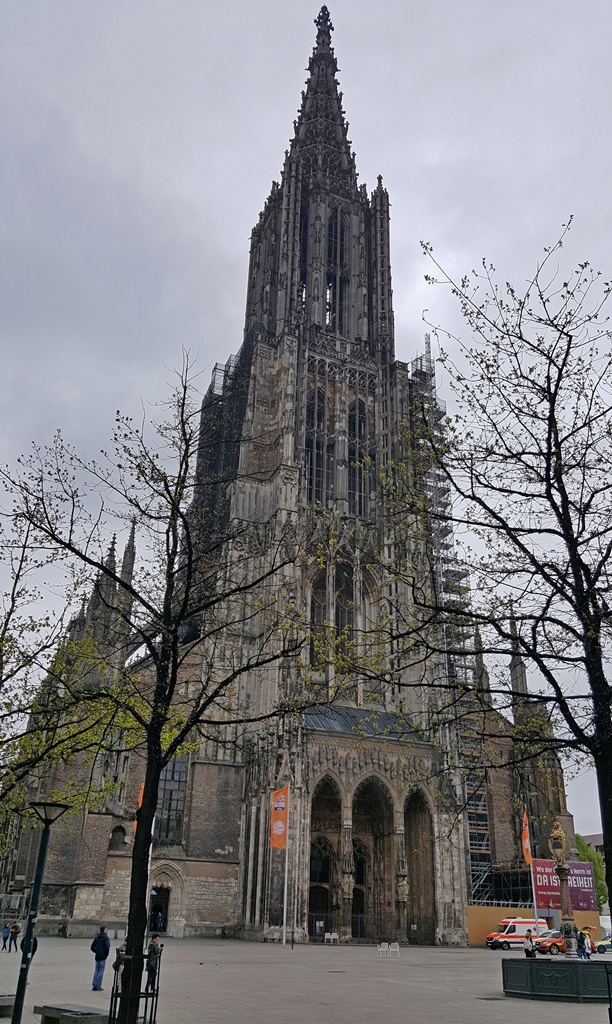
Ulm Minster
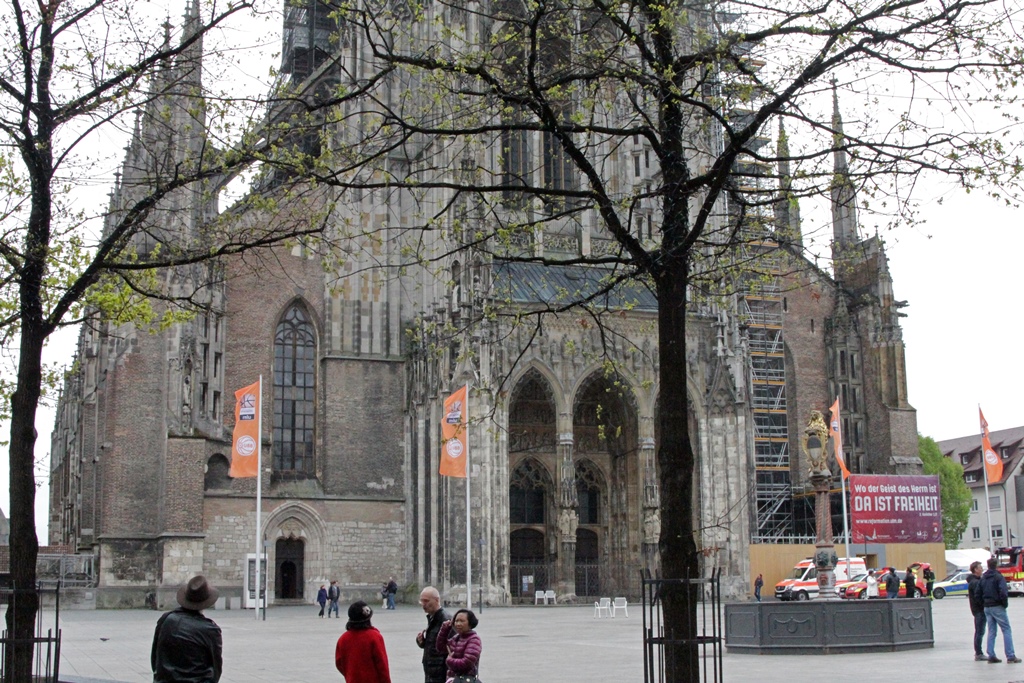
Group in Münsterplatz
We didn’t linger for long, however, as we were just getting wet. We moved on in search
of lunch, resolving to return to the Minster for a closer look later, when it would
hopefully be less damp. We walked along the south side of the church and found the tables,
seating and food stalls of a beer garden.
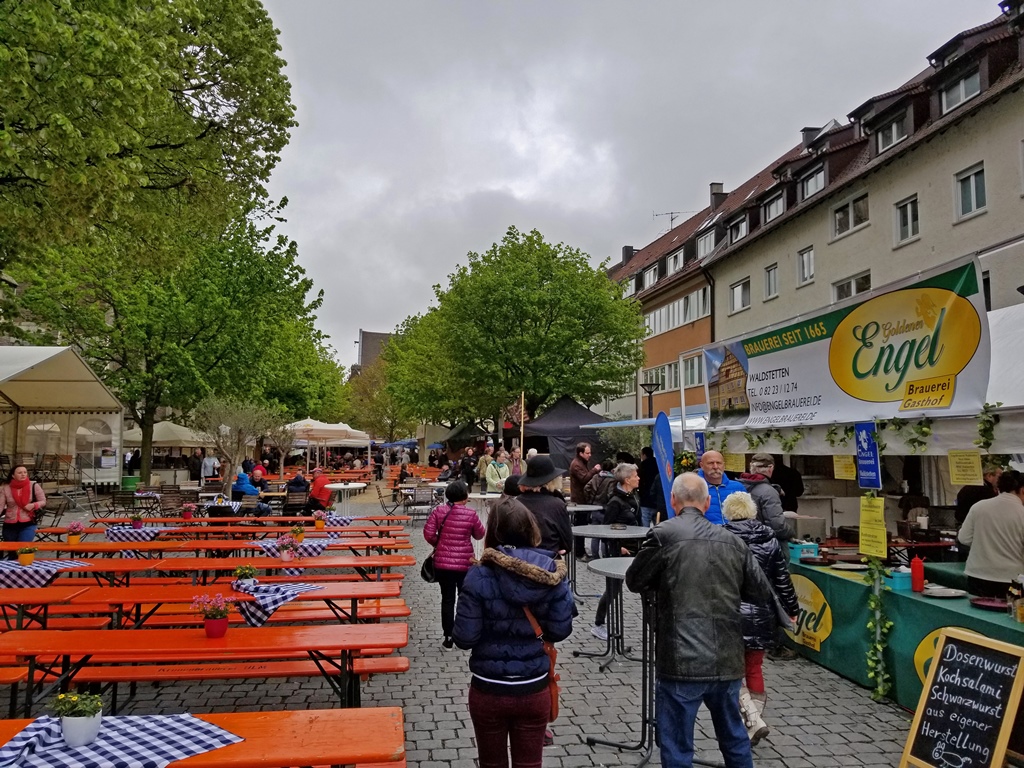
Group in Beer Garden Next to Minster
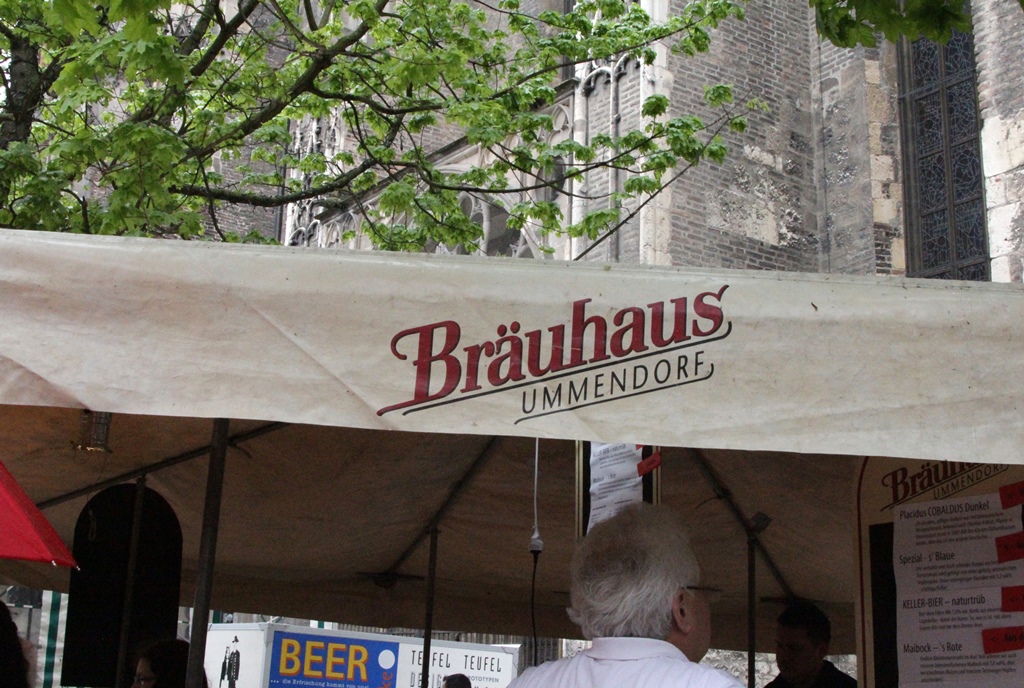
Beer for Sale
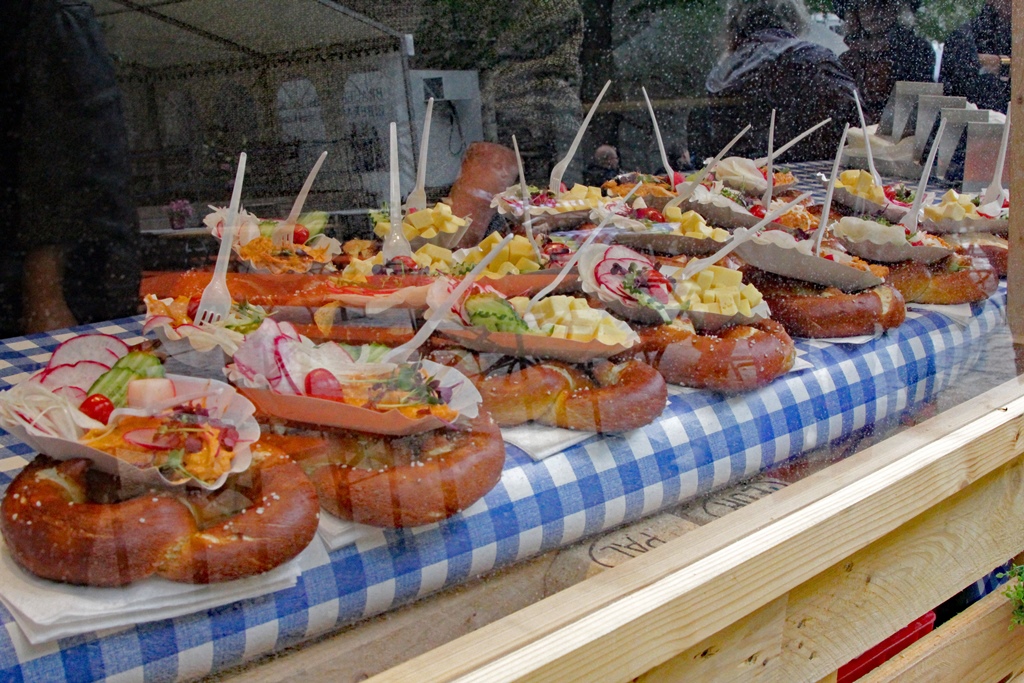
Giant Pretzels with Toppings
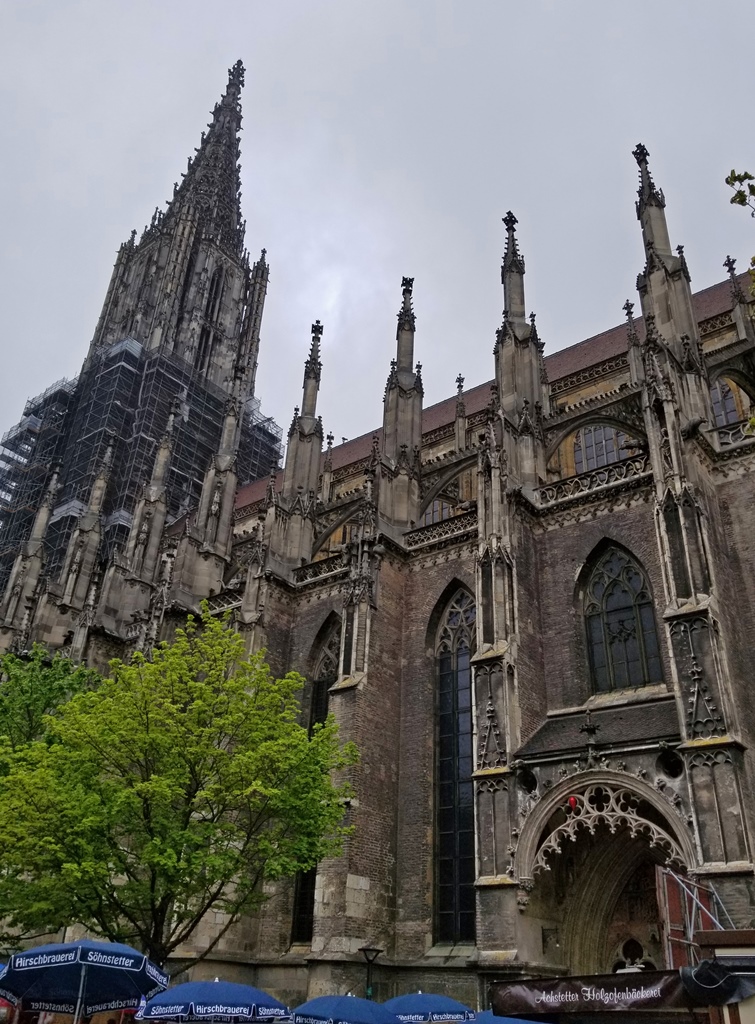
Ulm Minster from Beer Garden
We didn't stop for lunch in the beer garden, though. Soaking both ourselves and our lunch
struck us as a bad idea. We continued through the beer garden and followed Werner and Nila
onto a side street, where we found the Hotel Restaurant Ulmer Spatz (a spatz
is a sparrow), which offered good traditional food in warm and dry surroundings.
Hotel Restaurant Ulmer Spatz
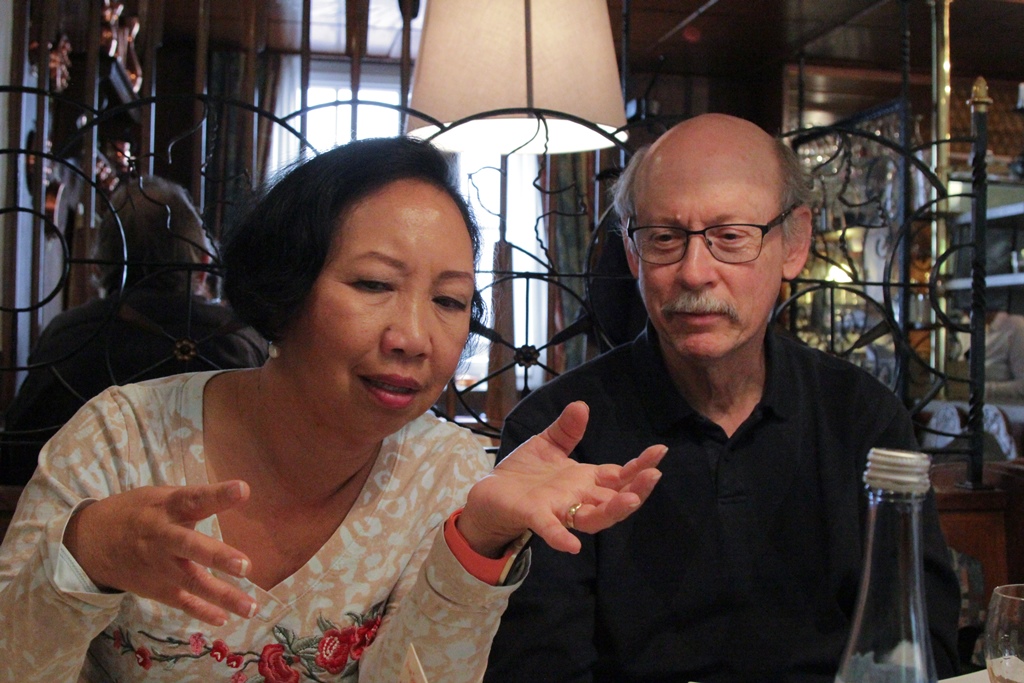
Nella and Bob Waiting for Lunch
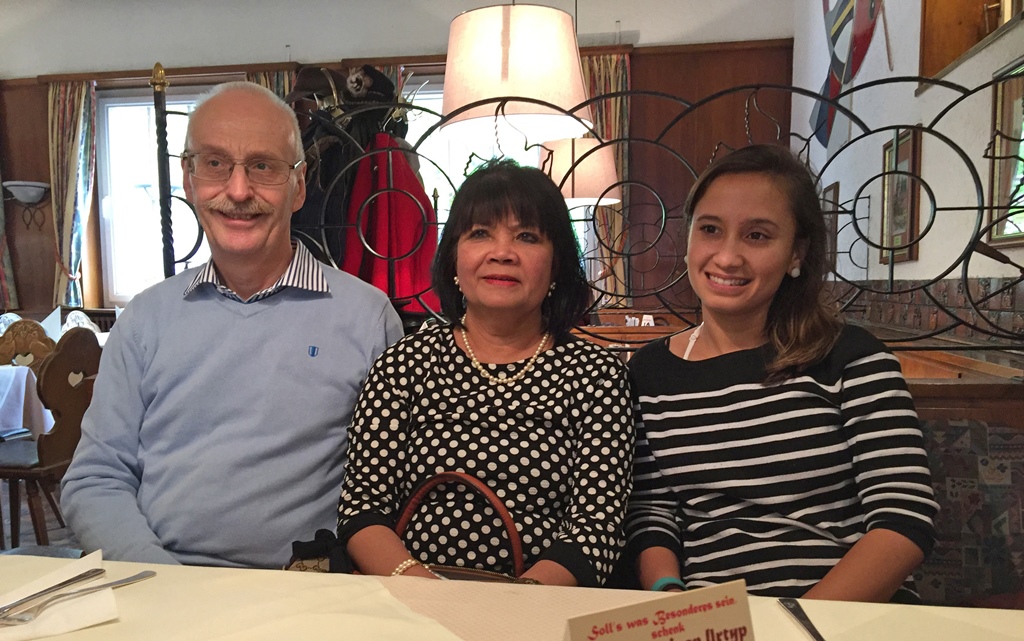
Werner, Nila and Connie

Meat Salad

Sausage, Beans and Spaetzle
After finishing lunch, we found that the lunch break had not improved the weather appreciably.
Nevertheless, we did a little exploring of the immediate area before heading back toward the
Minster. We found that Ulm had an interesting old Rathaus (Town Hall), which was originally
built in 1370 and which is covered in colorful murals dating back to the 16th Century. The
building looked pretty good, having been restored after damage suffered in the 1944 bombing.
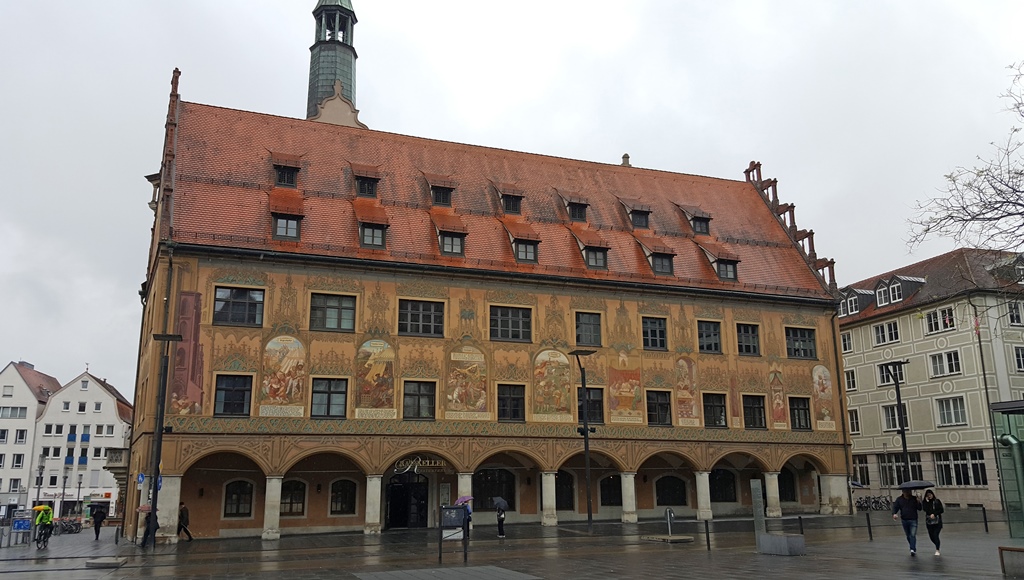
Ulmer Rathaus
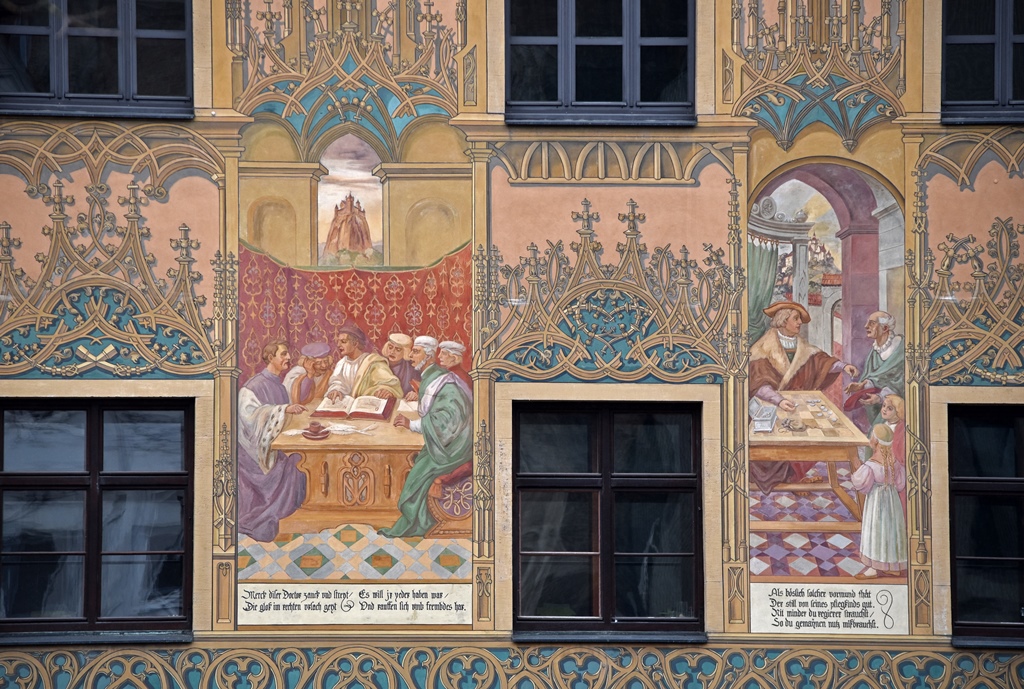
Paintings on Ulmer Rathaus
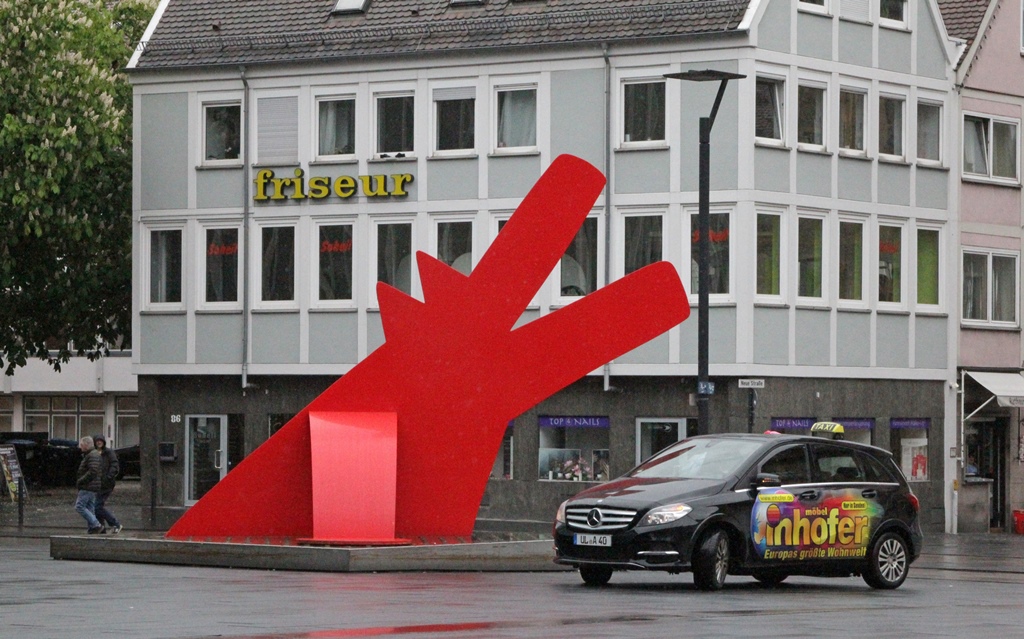
Roter Hund (Red Dog) Sculpture, by Keith Haring
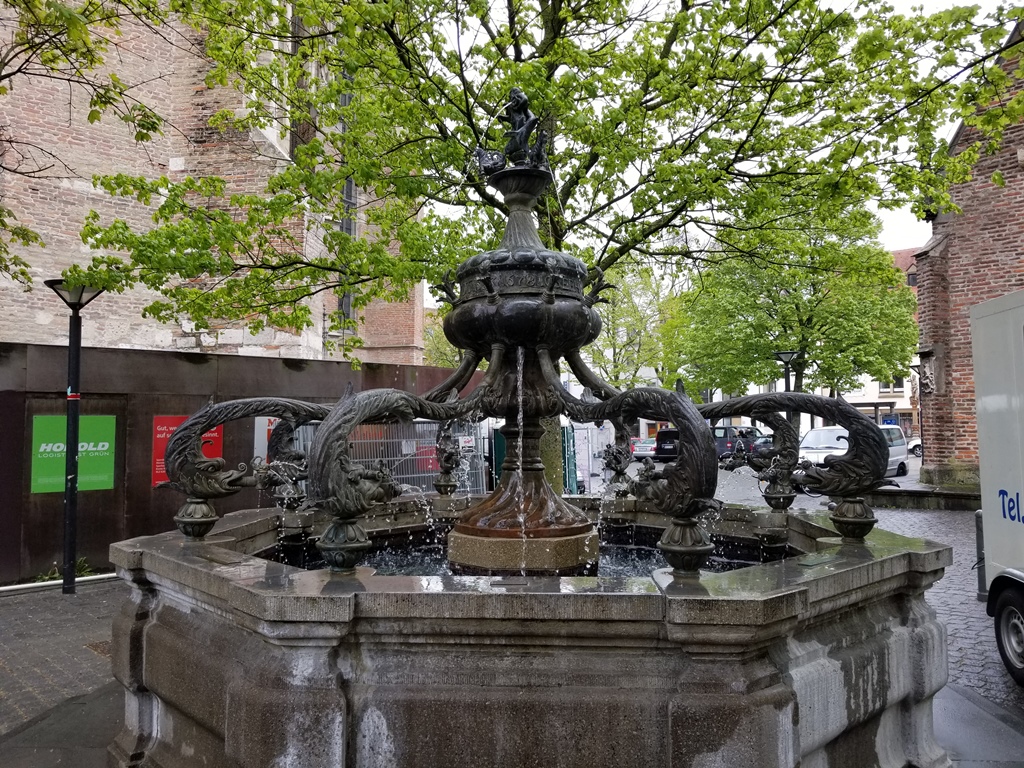
Fountain Next to Minster
As stated above, the Minster is the tallest church in the world, having attained this height
in the 19th Century. Primary construction of the church had taken place between 1377 and
1543, followed by a long break until construction resumed in 1844. The 19th Century work
included the addition of flying buttresses and secondary towers, in addition to a radical
expansion of the main tower. Much of the original work had been done in brick, but the
towers were mostly done in sandstone. The church has a little bit of a split personality – in
1530-31, during the Reformation, Ulm officially converted from Catholicism to Protestantism,
and the Minster became a Lutheran church. So while the church’s layout and sheer ambition
reflect its original Catholic character, measures have been taken (e.g. the painting over of
some of the frescoes) to scale back some of the decorative elements, which Protestants can
find distracting.
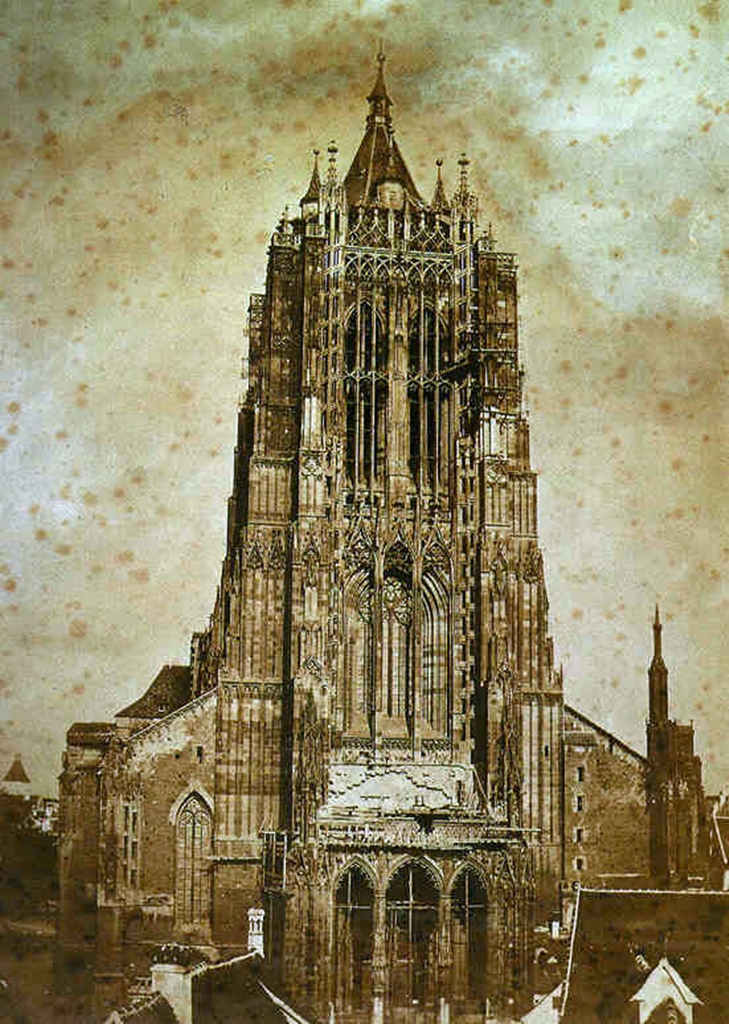
The Minster in 1854
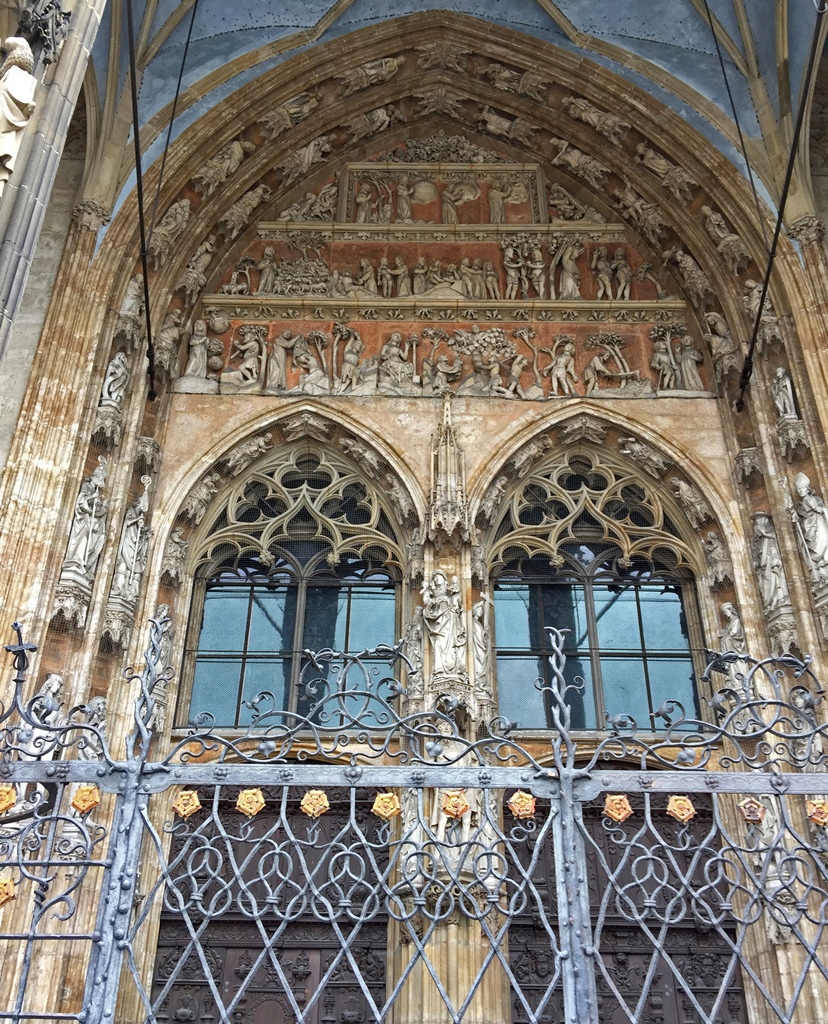
Minster Doorway
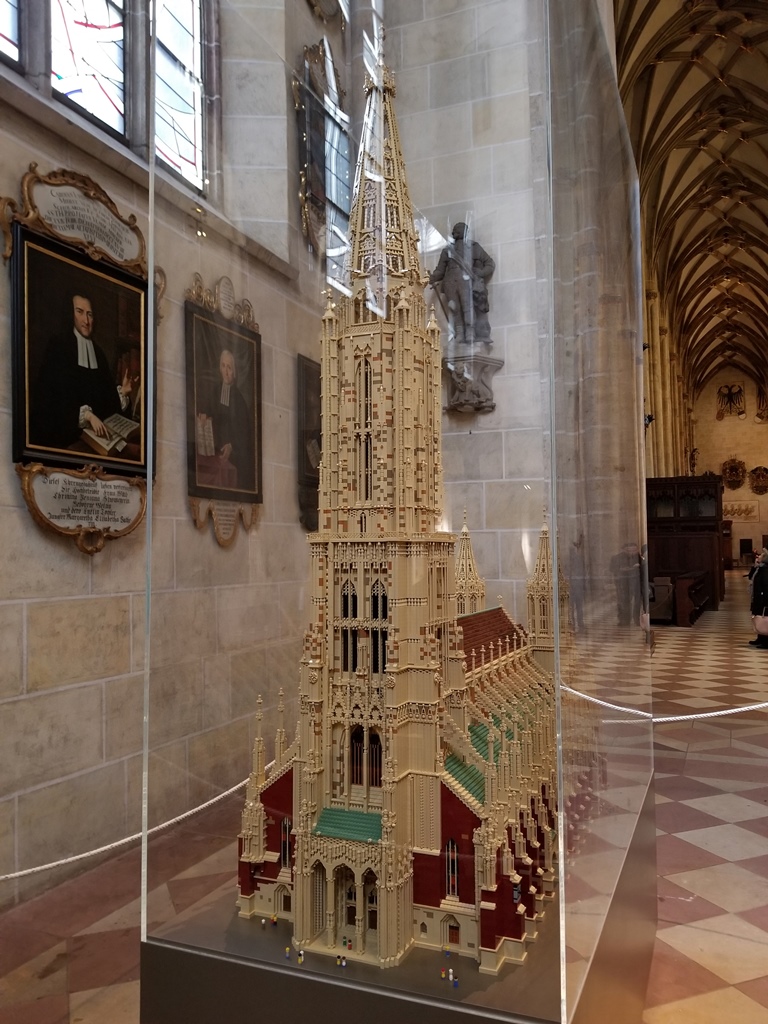
Model of Minster
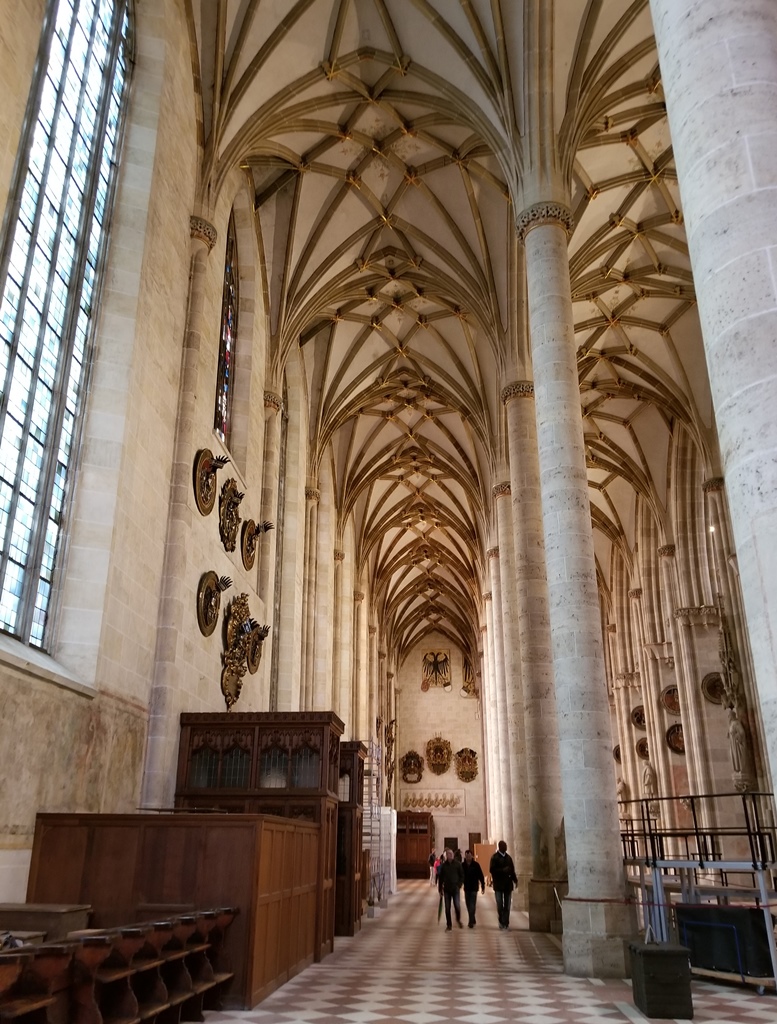
Naves
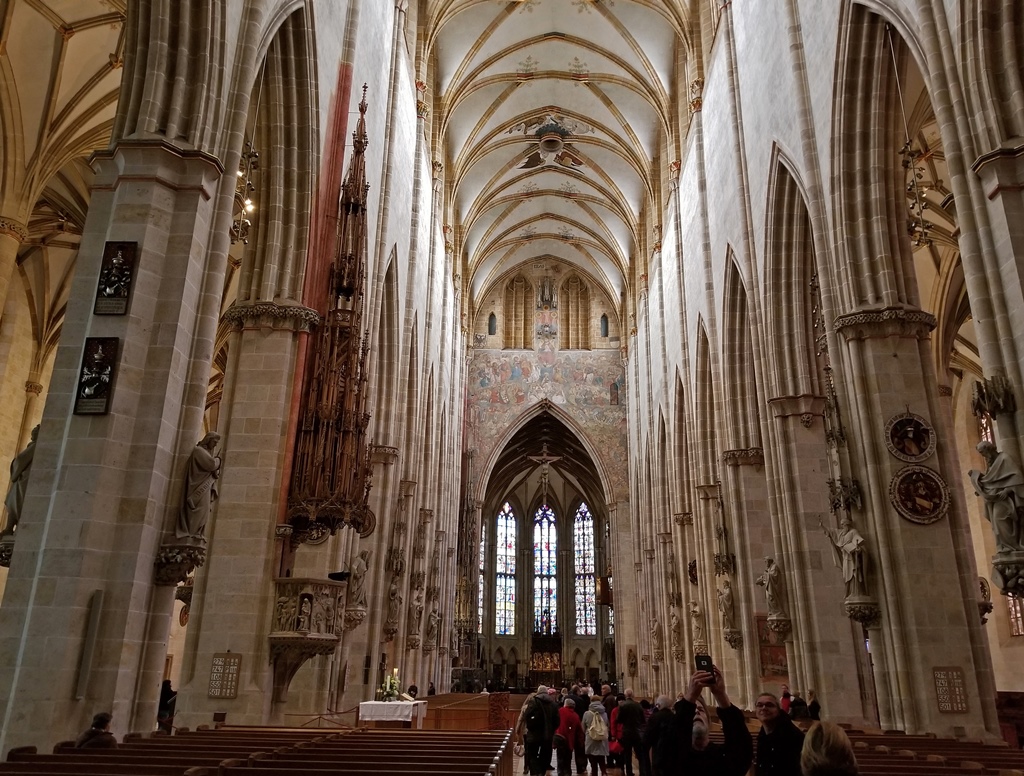
Center Nave
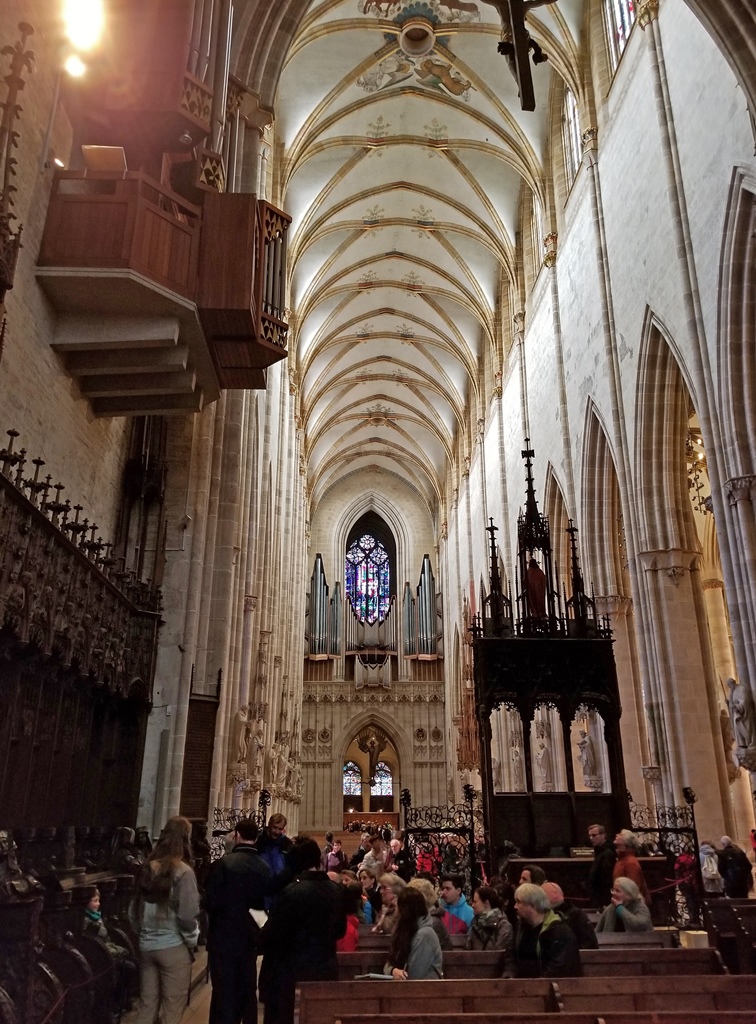
Nave from Choir
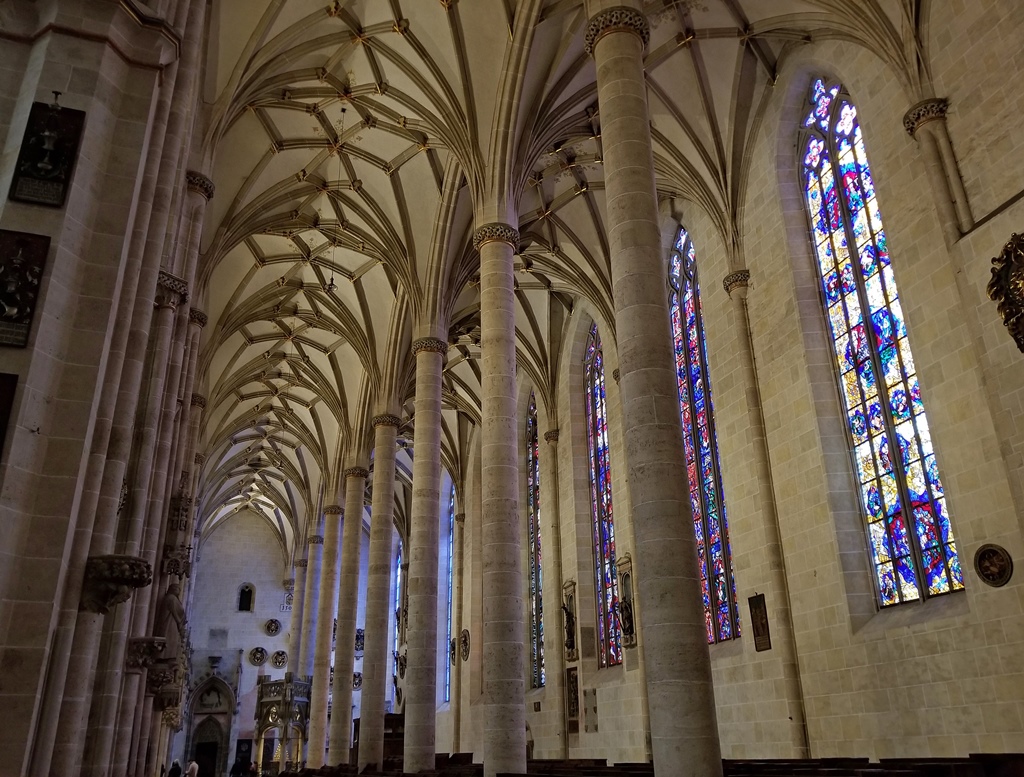
South Aisle
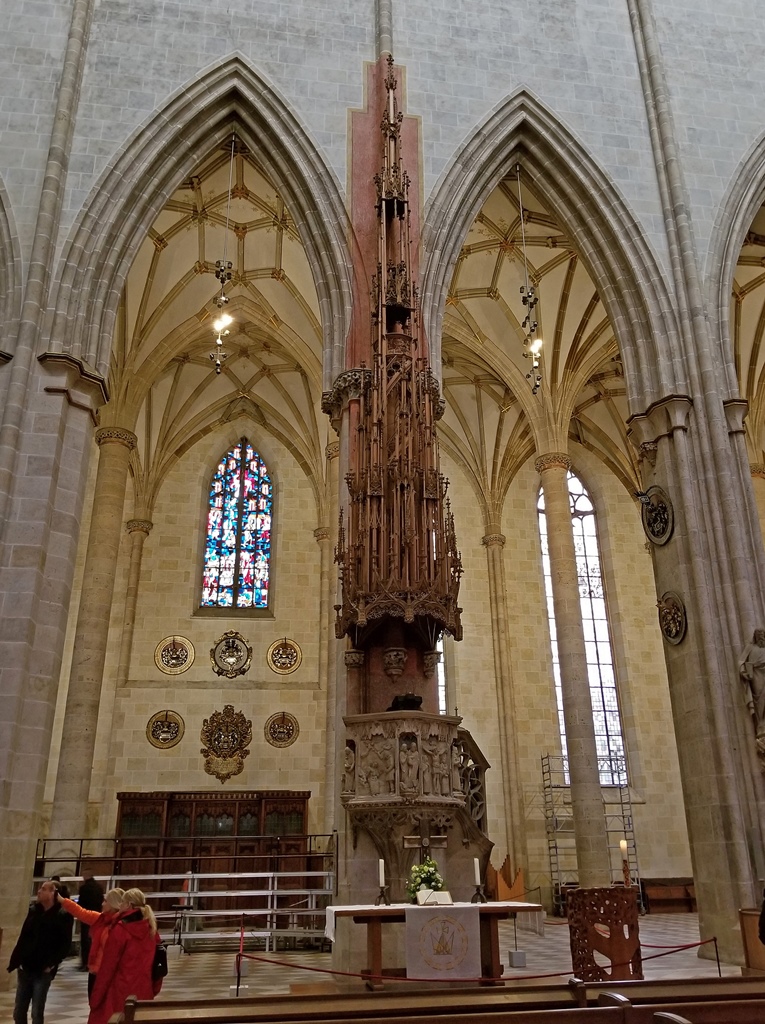
Pulpit
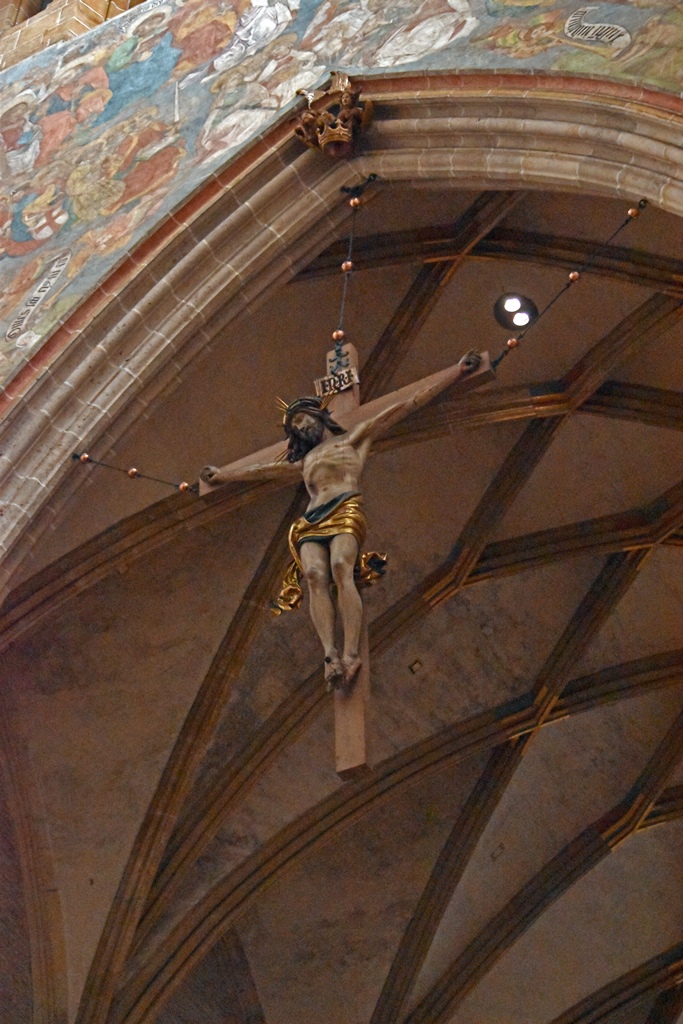
Crucifix
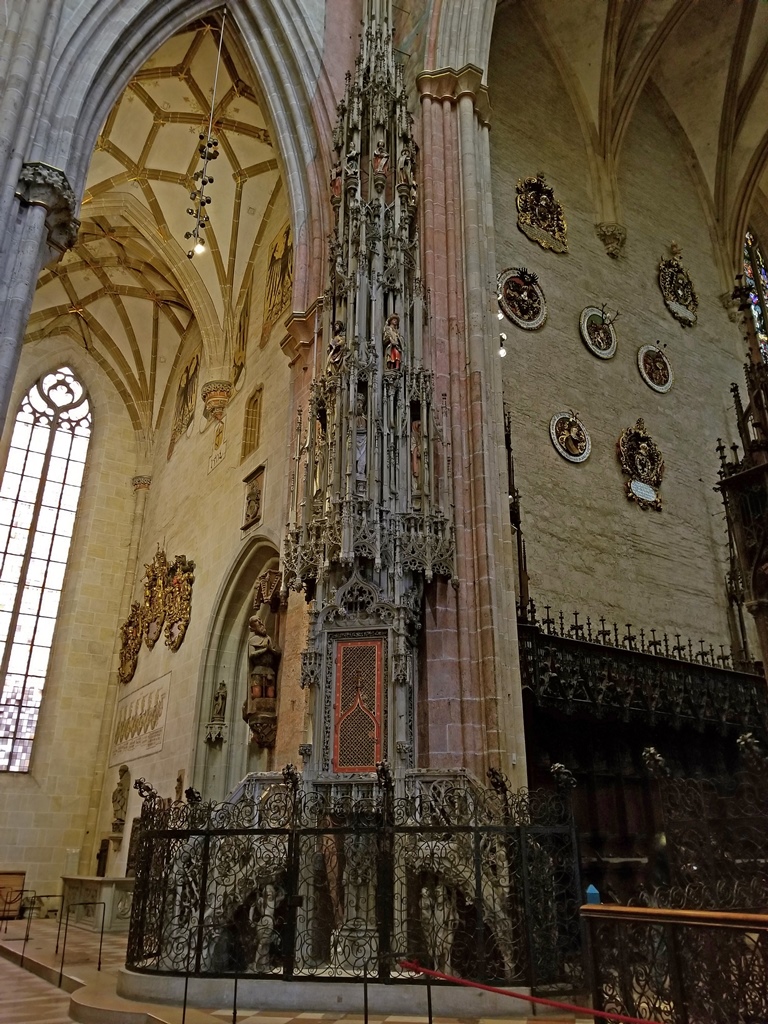
Tabernacle
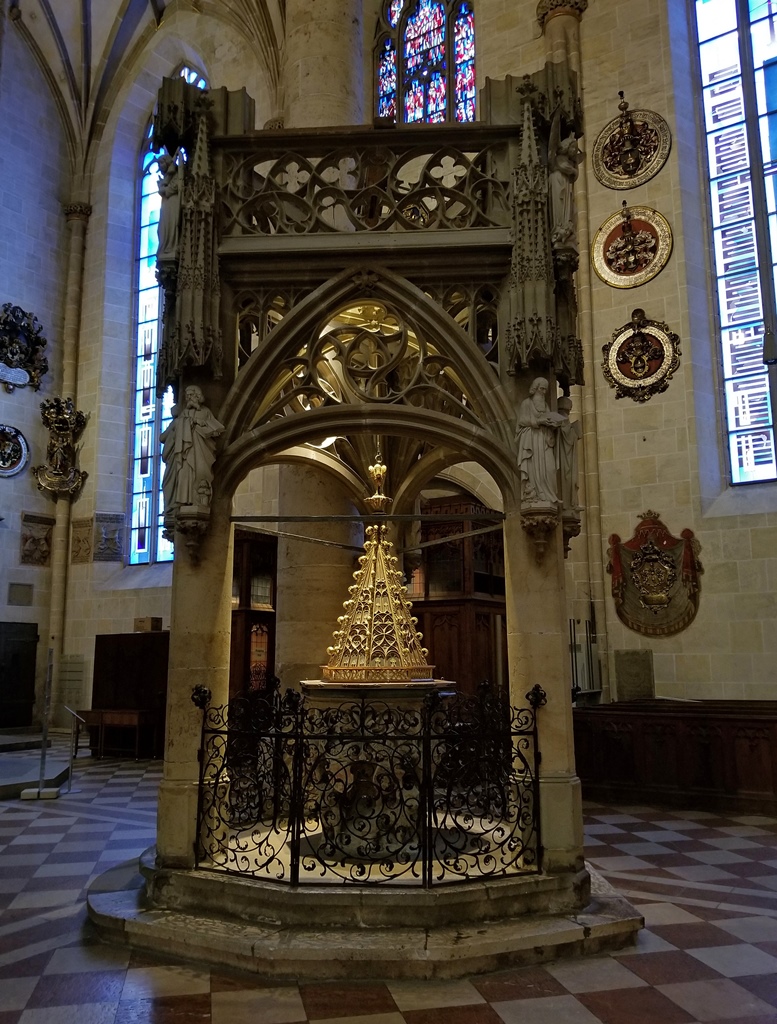
Baptismal Font
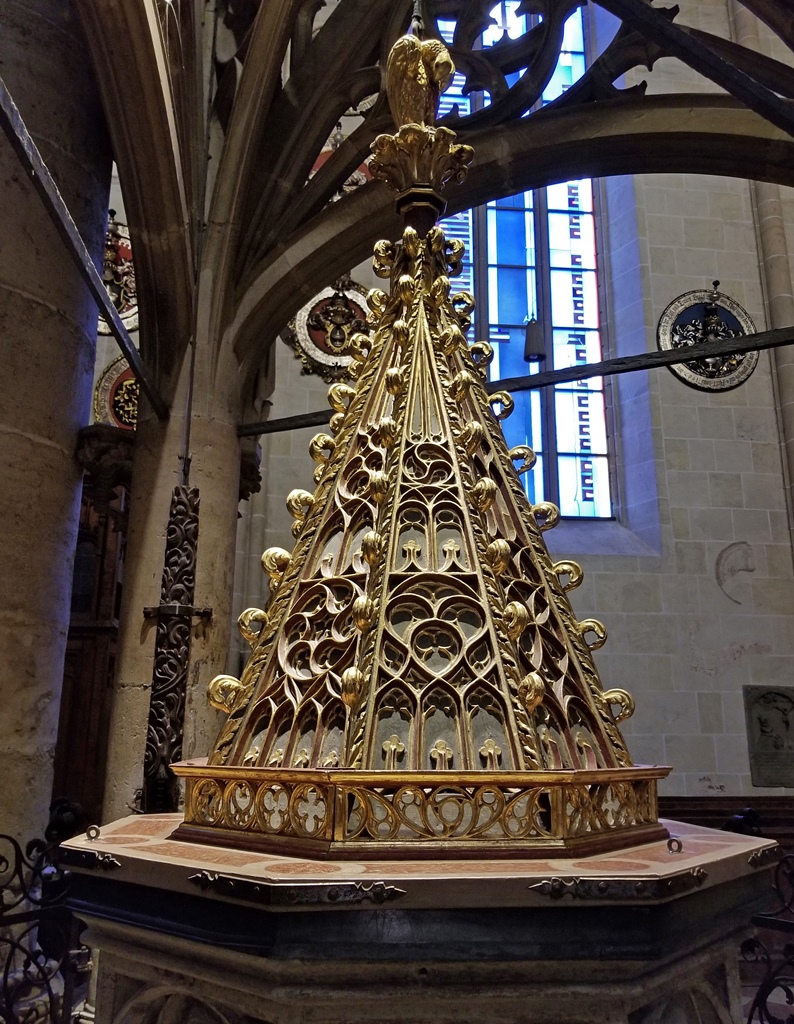
Detail, Baptismal Font
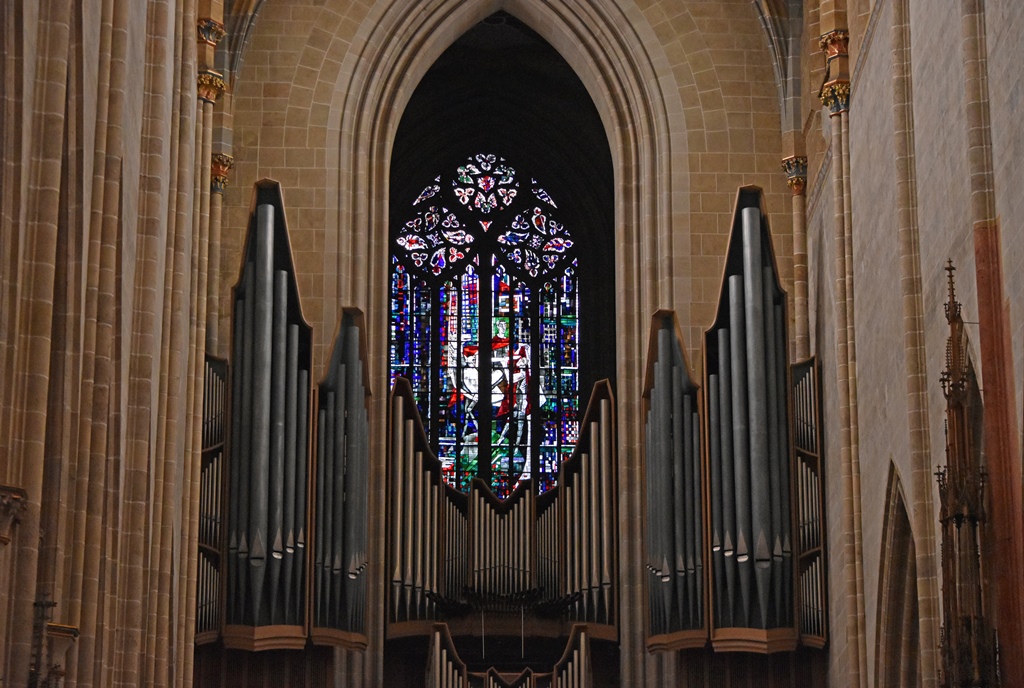
Organ (16th C.) - Played by Mozart in 1763
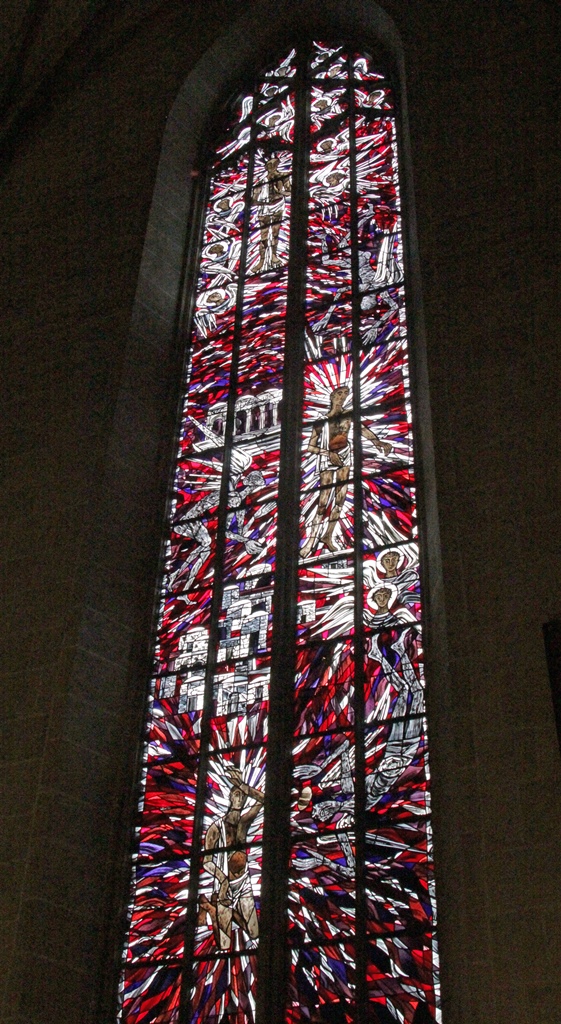
Stained Glass
Here are some decorative elements that are very similar to things that might be found in a
Catholic church:
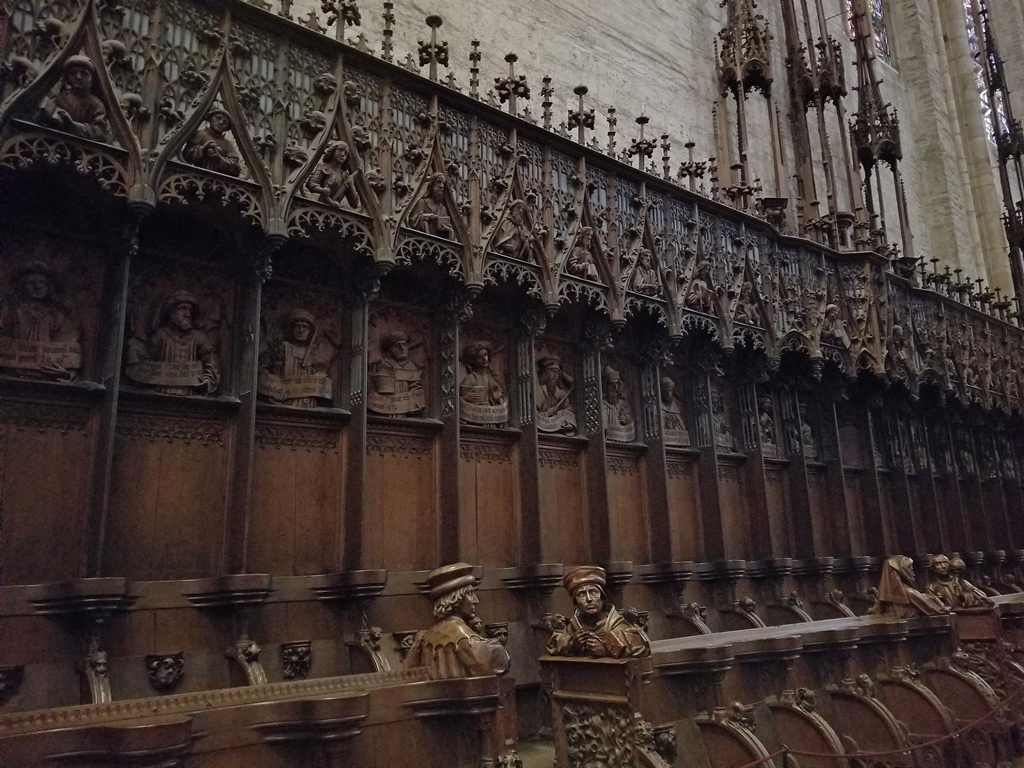
Choir Stalls
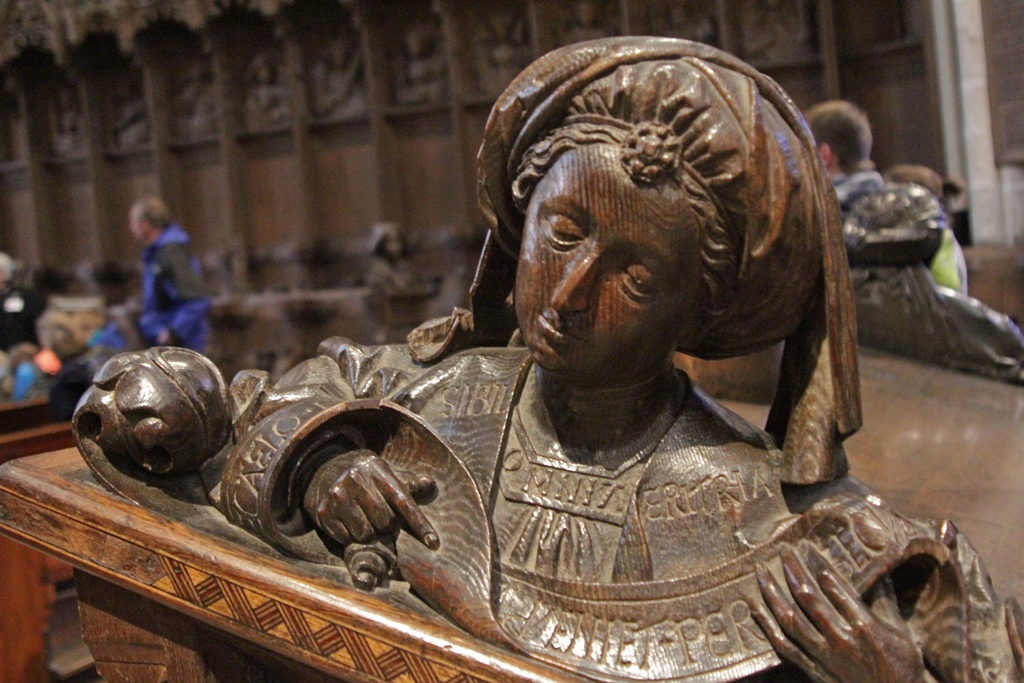
Detail, Choir Stalls
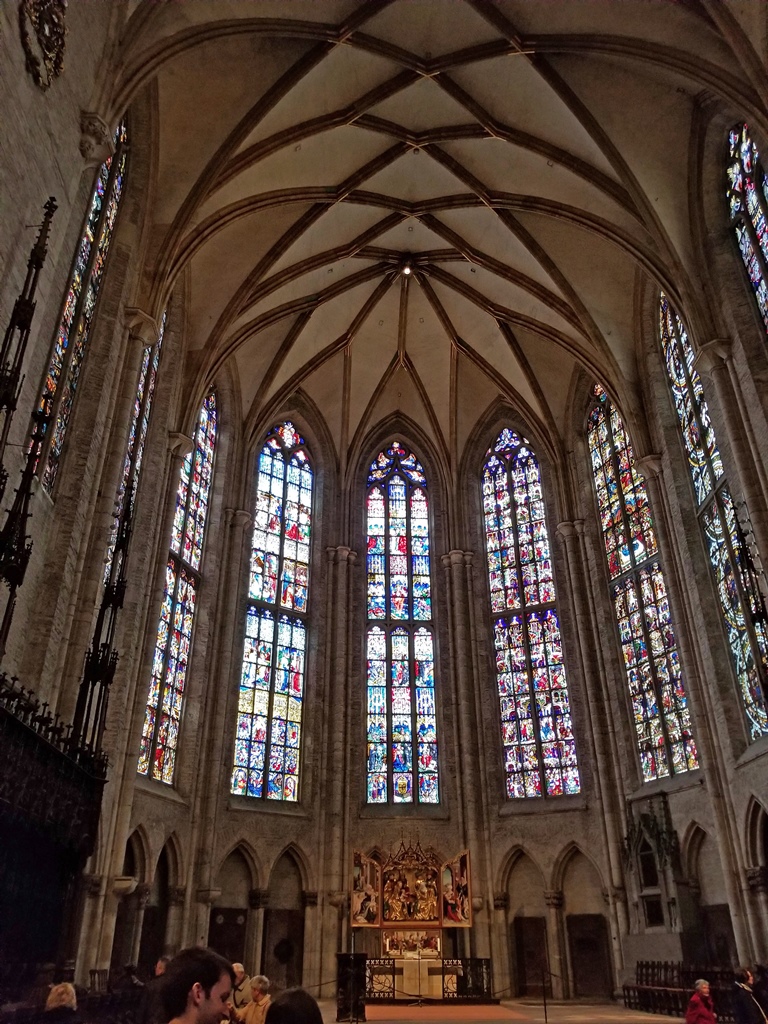
Apse and Main Altar
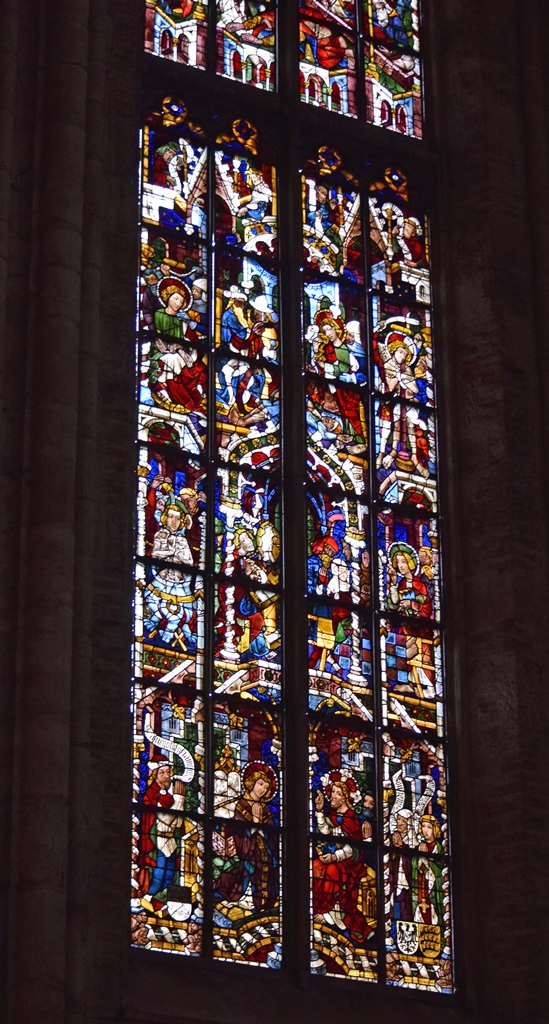
Stained Glass Detail
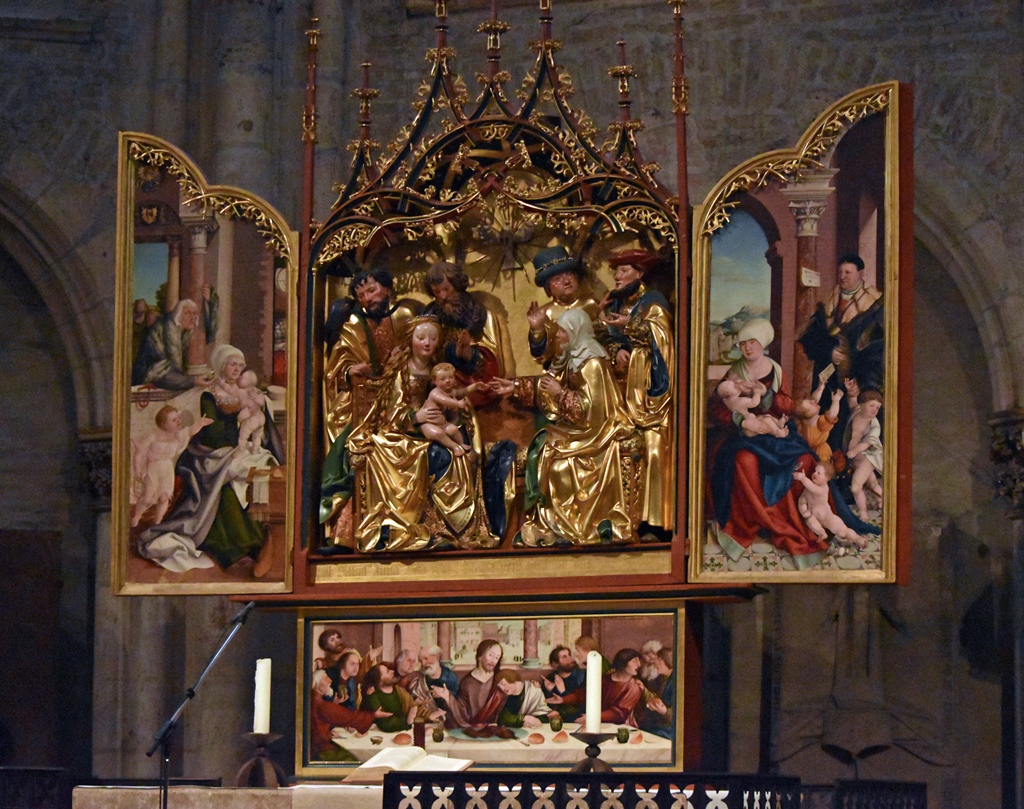
Main Altar (16th C.)
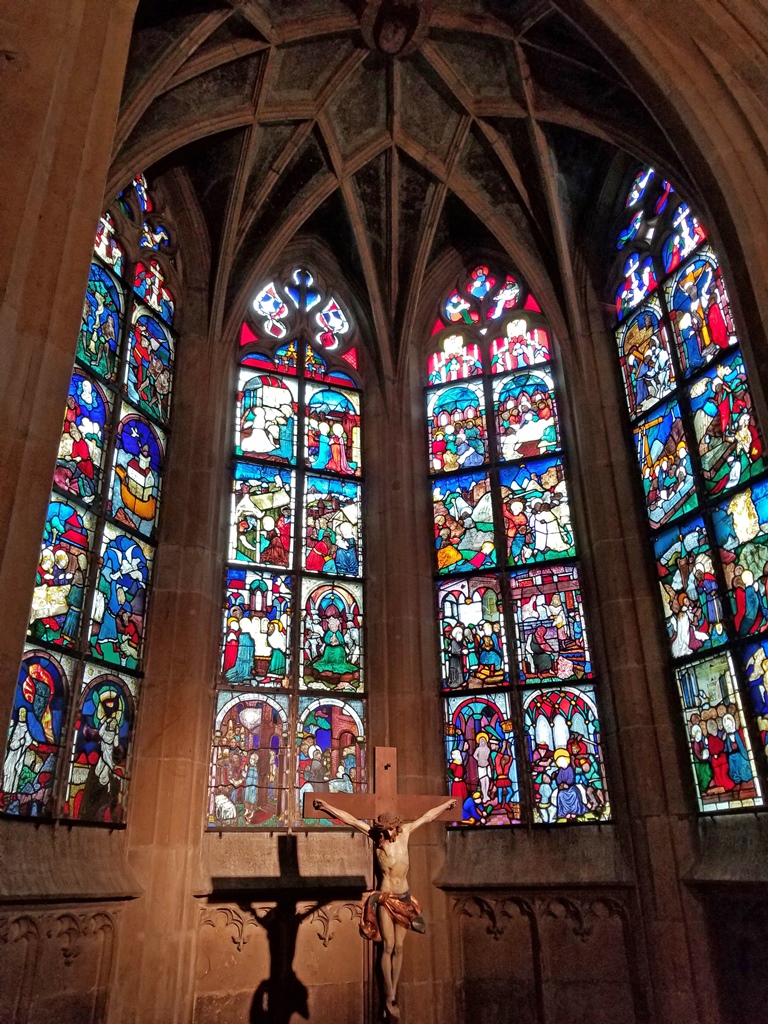
Chapel with Stained Glass
While the Minster has some paintings, as also seen in Catholic churches, there are
noticeably fewer of them. But there are many medallion-shaped coat-of-arms things.
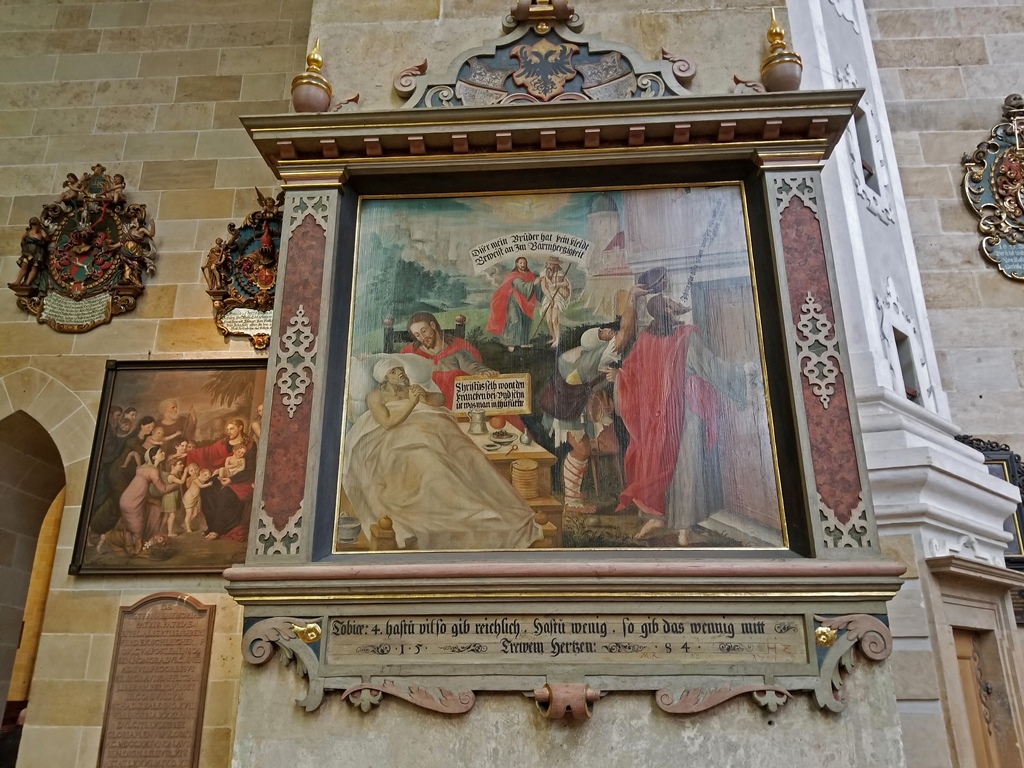
Paintings in Minster
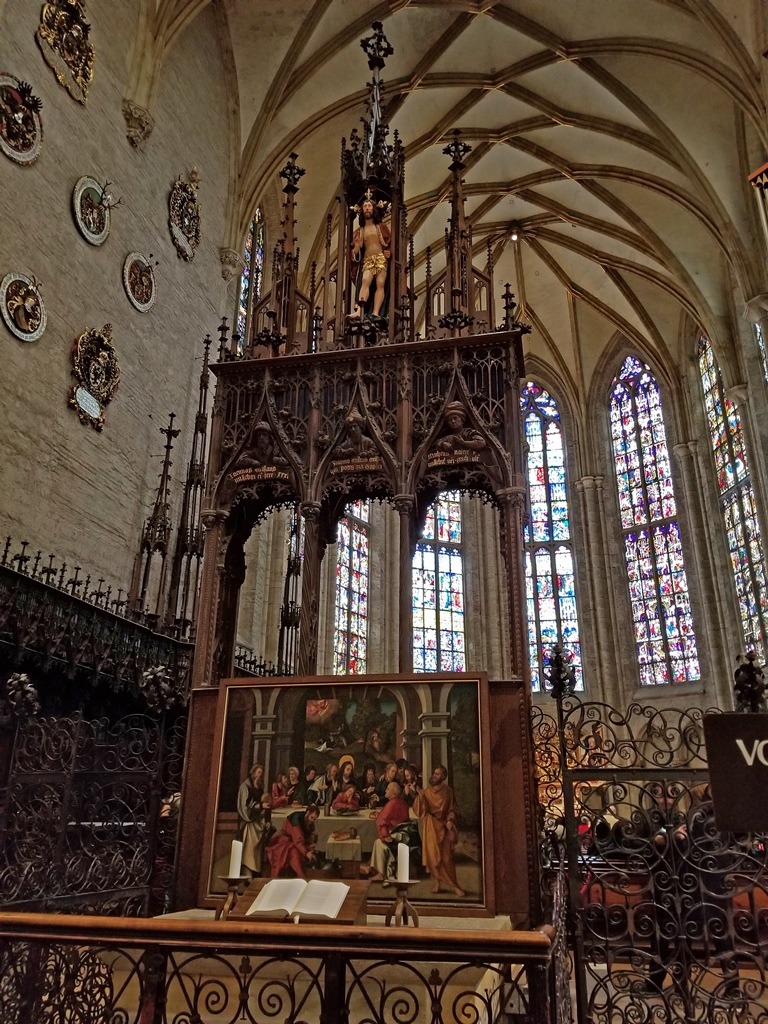
Altarpiece with Last Supper Painting
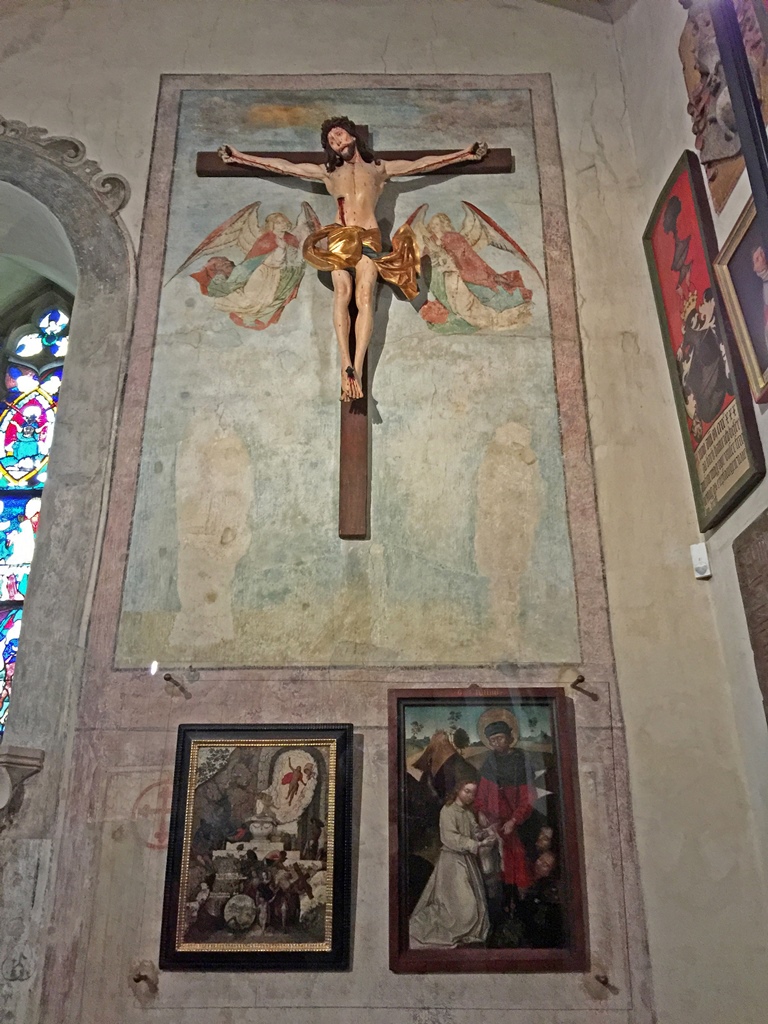
Crucifix and Paintings
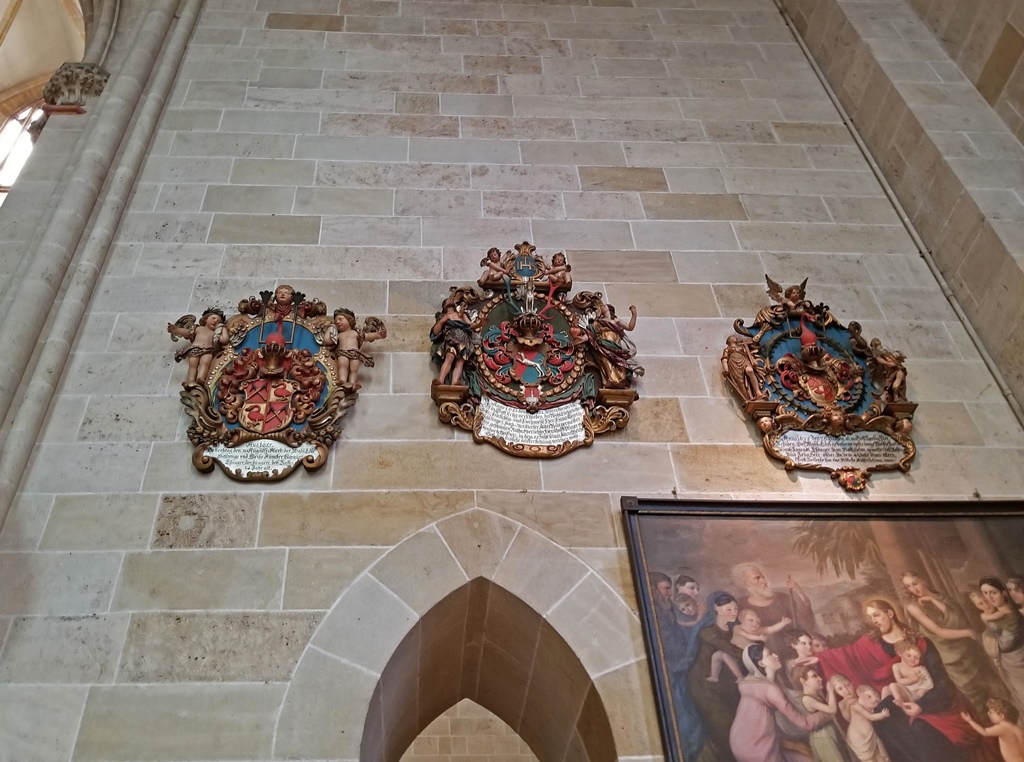
Coats of Arms
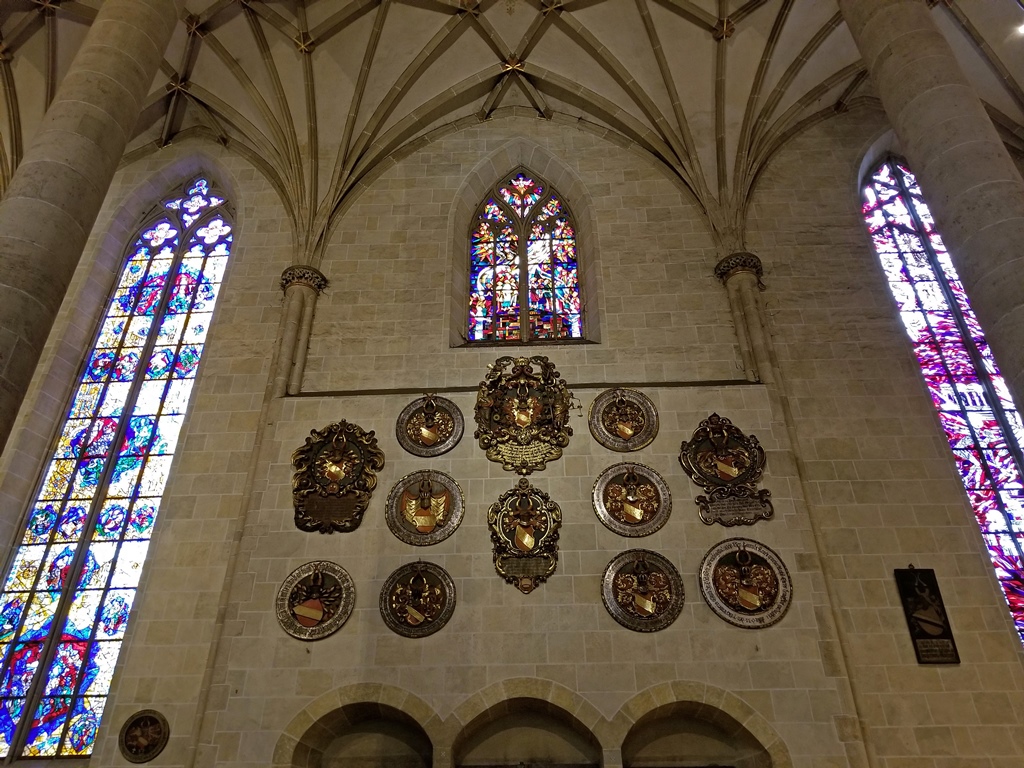
Coats of Arms
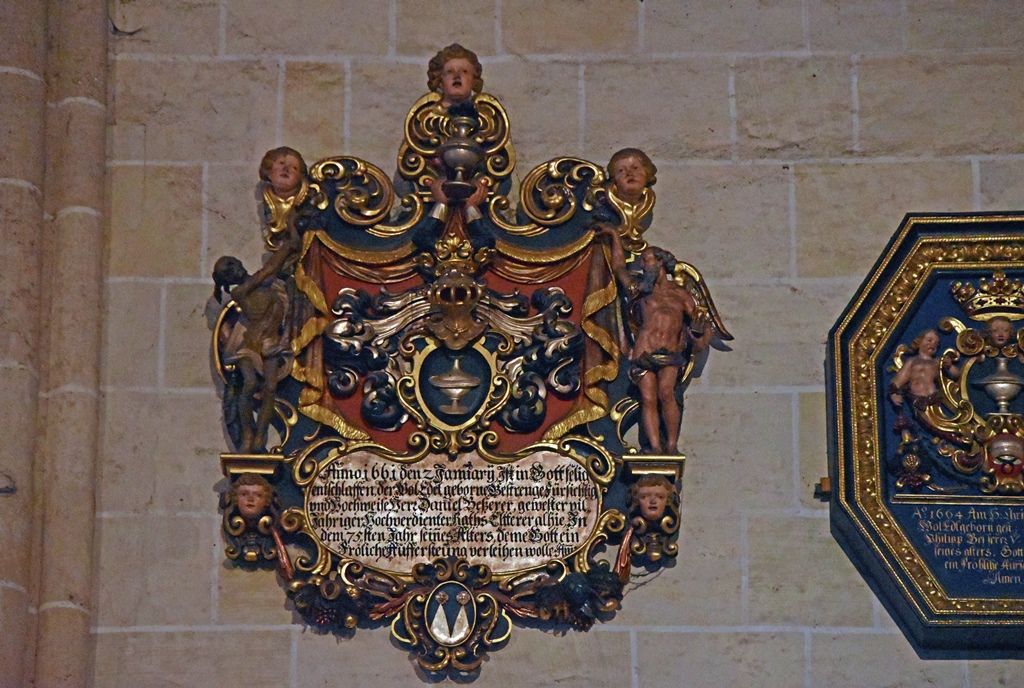
Coat of Arms
Having seen what we could of the inside of the church, we had nothing left to face
but the unspoken challenge of the world’s tallest church: getting to the top. The cost
was five euros for the honor of climbing 768 steps (no elevator) in the rain and wind to
reach a small observation platform at 469 feet, from which the entirety of Ulm could be
viewed at leisure. The adults in our group knew this to be an errand of the young or
foolhardy, and elected to stay in the warm, dry church. But Connie was determined to
represent the young, and I somehow felt the need to represent the foolhardy, so the two
of us paid our money and started to climb. Along the way we found straightforward
flights of stairs, spiral stairs, uncovered walkways, gargoyles and bells, and
eventually a final spiral staircase which was too narrow for two-way traffic.
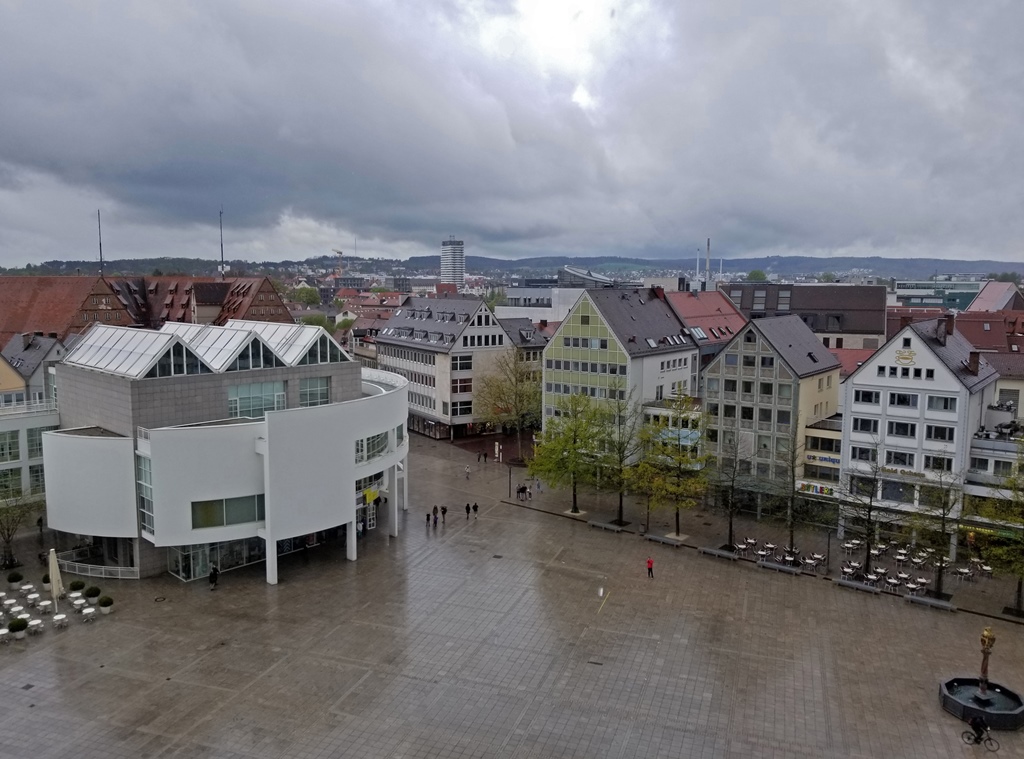
Münsterplatz from Stairs
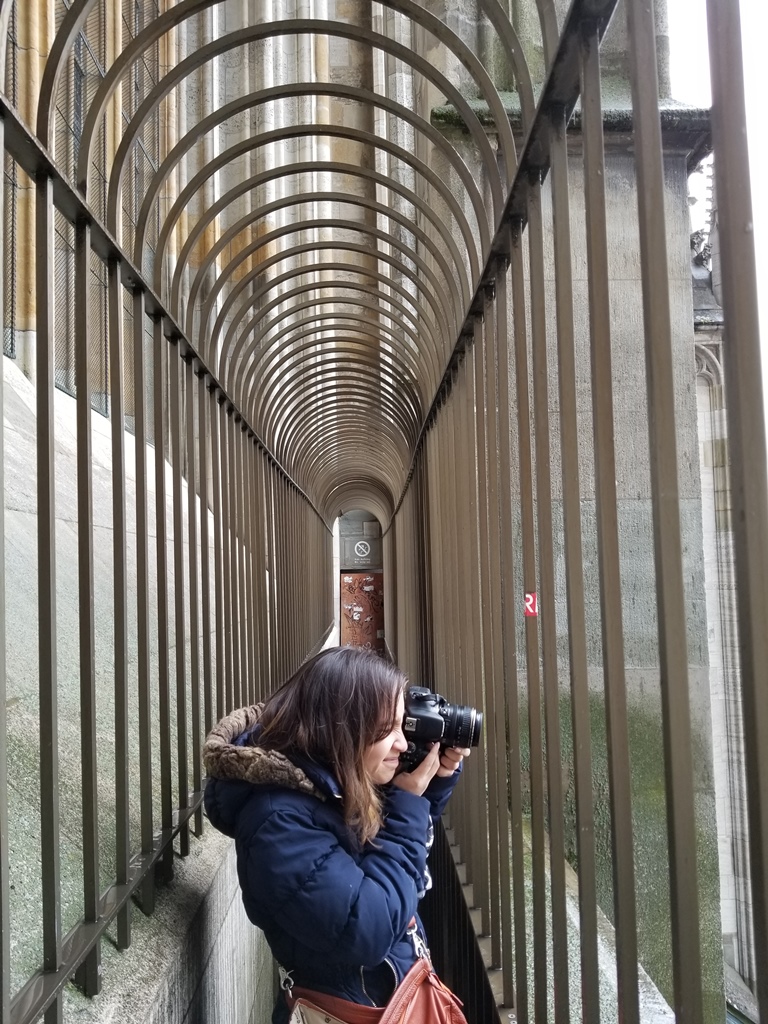
Connie Taking Pictures
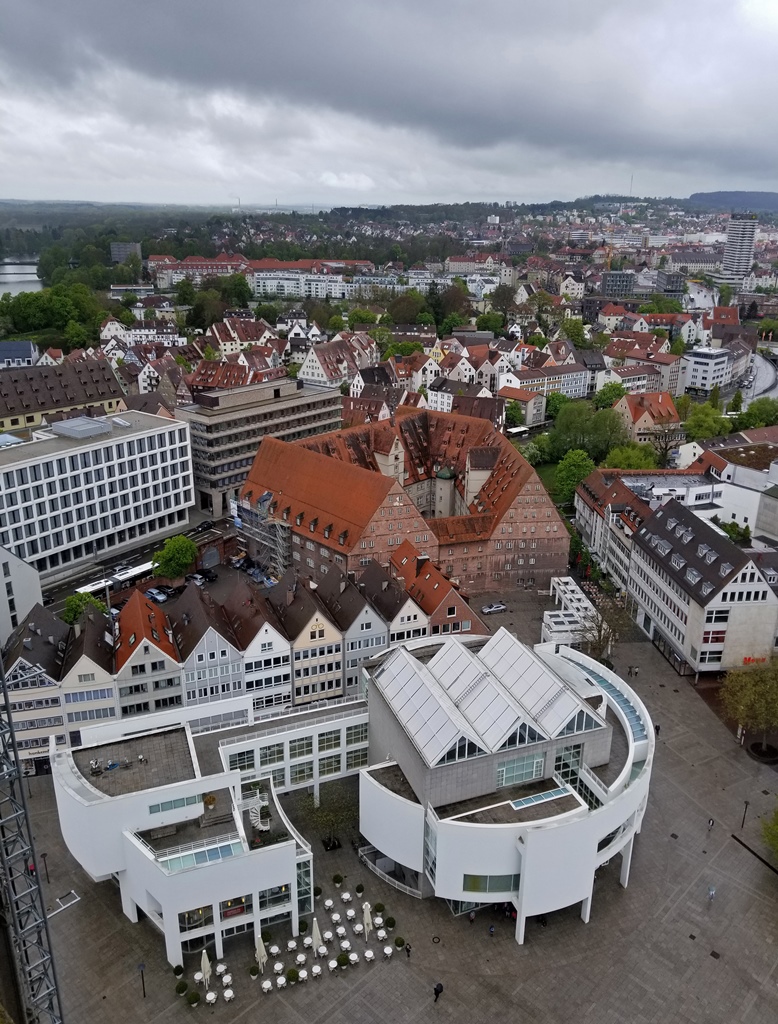
Tourist Information Center and Police Station
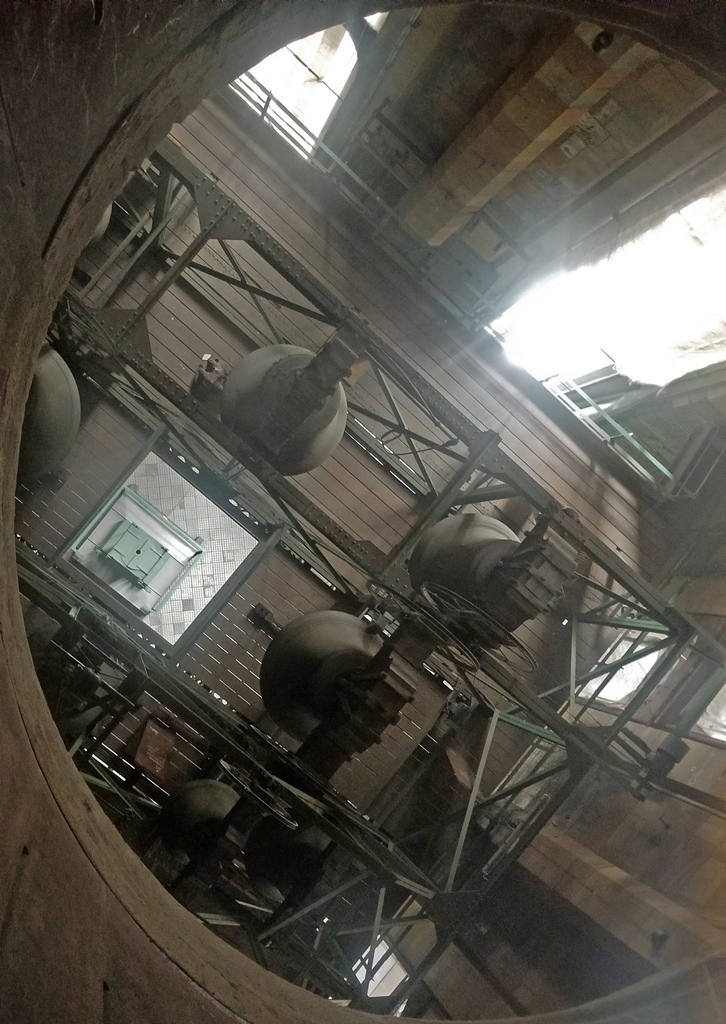
Bells from Above
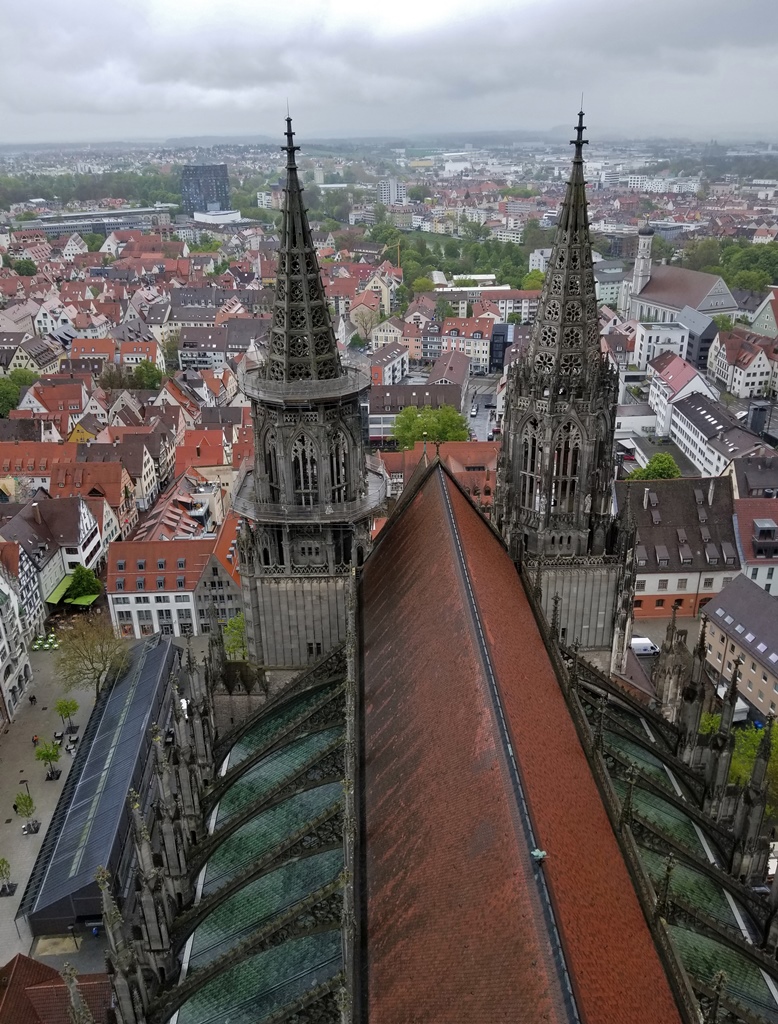
Roof and Eastern Towers
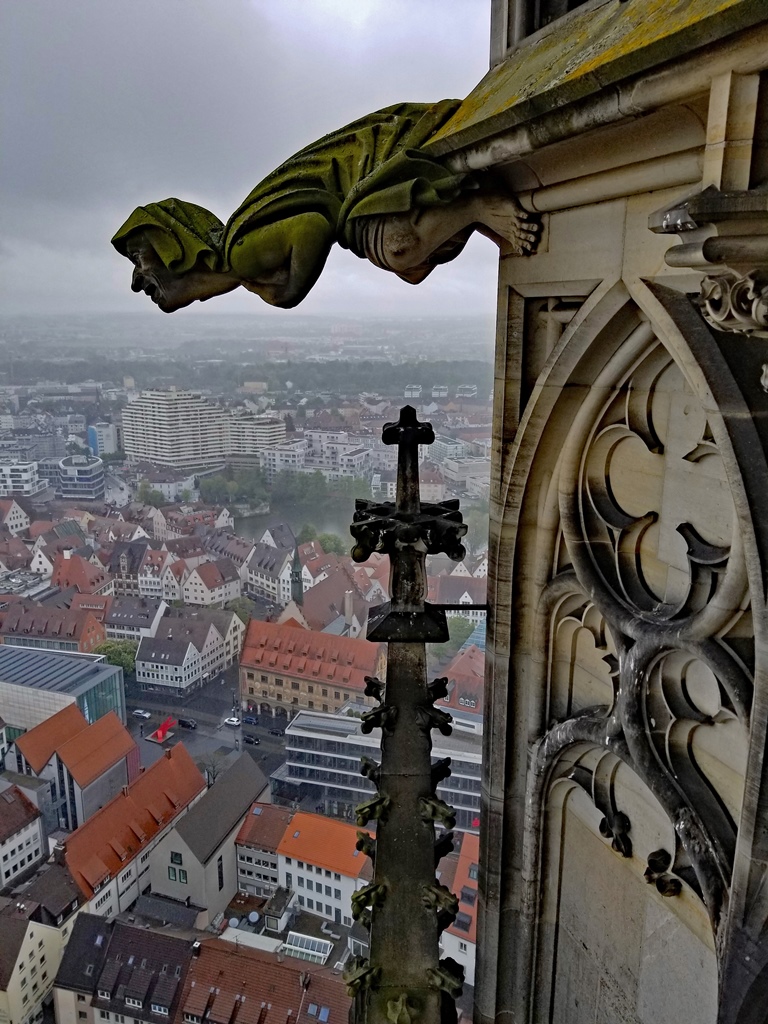
Gargoyle and Spire
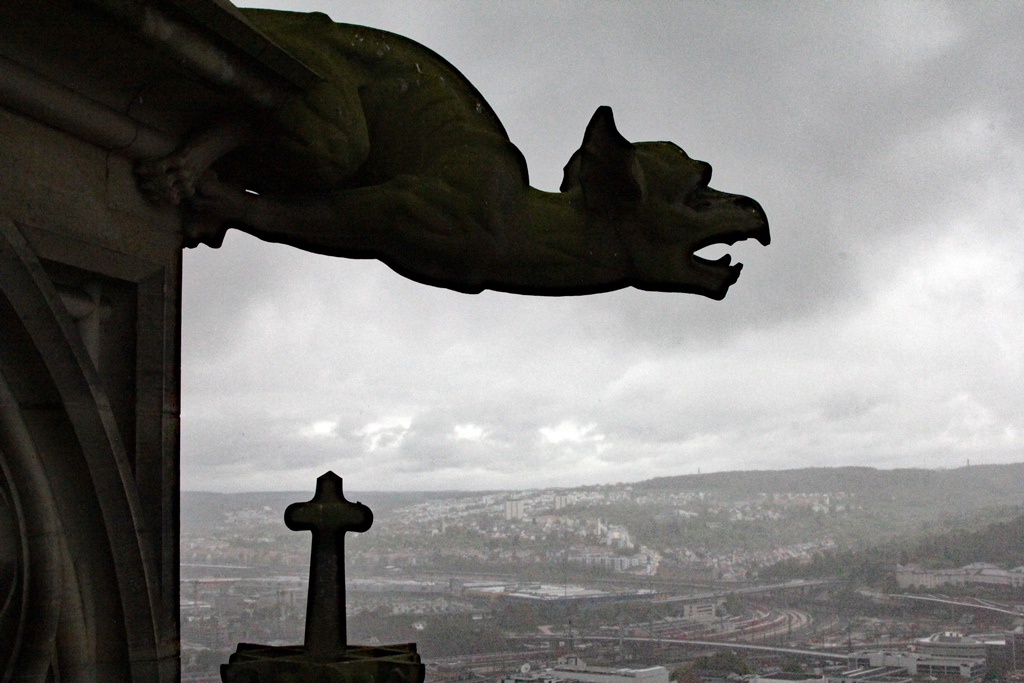
Gargoyle
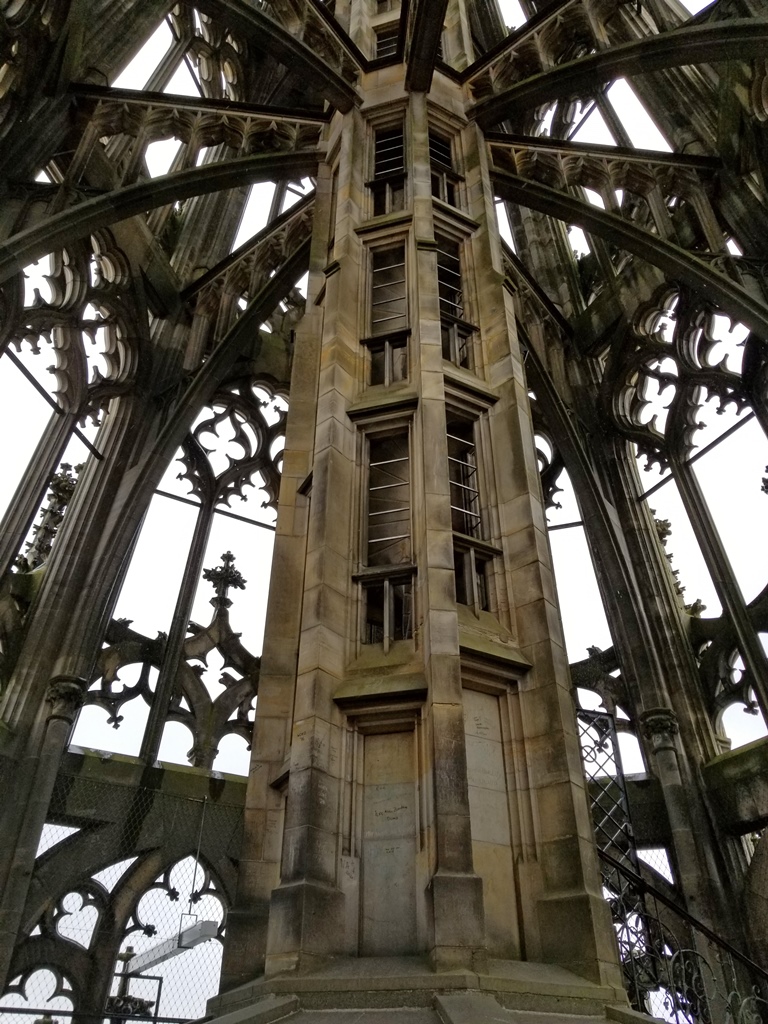
Final Inner Staircase
At last we reached the platform and enjoyed the view from the tallest church on the planet.
It was cold and damp and the wind was intense, but we highly recommend the experience. But
if you’re going to go, you should go soon, because in a few short years this probably won’t
be the world’s tallest church anymore. Construction is proceeding apace on Barcelona’s
Sagrada Família church, and around 2026, the central tower of the church is
projected to reach its final height, about 30 feet taller than the Ulm Minster. I don’t
know what the access plans are for this new tower, but I suspect they will involve an
elevator.
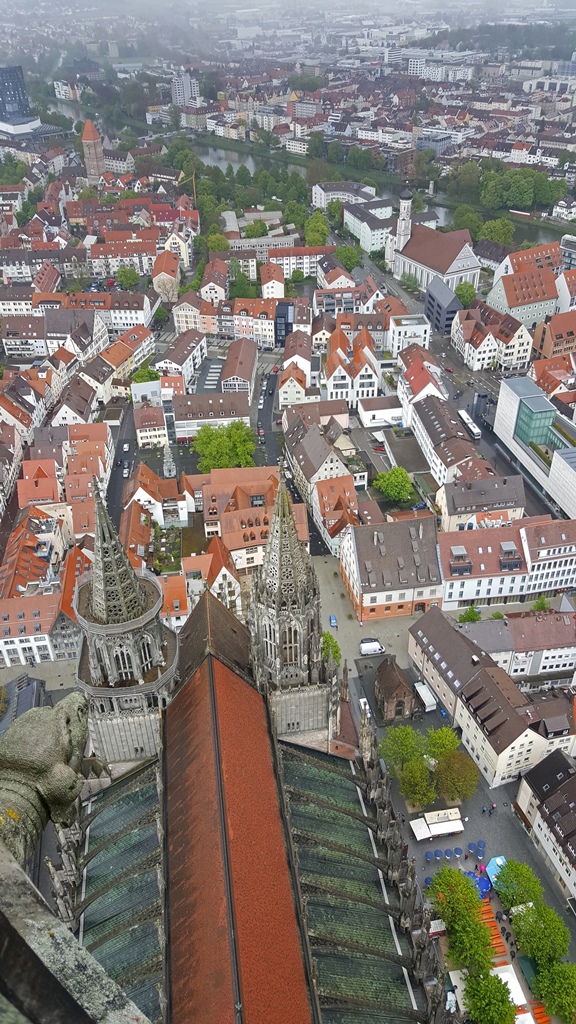
Roof and Eastern Towers
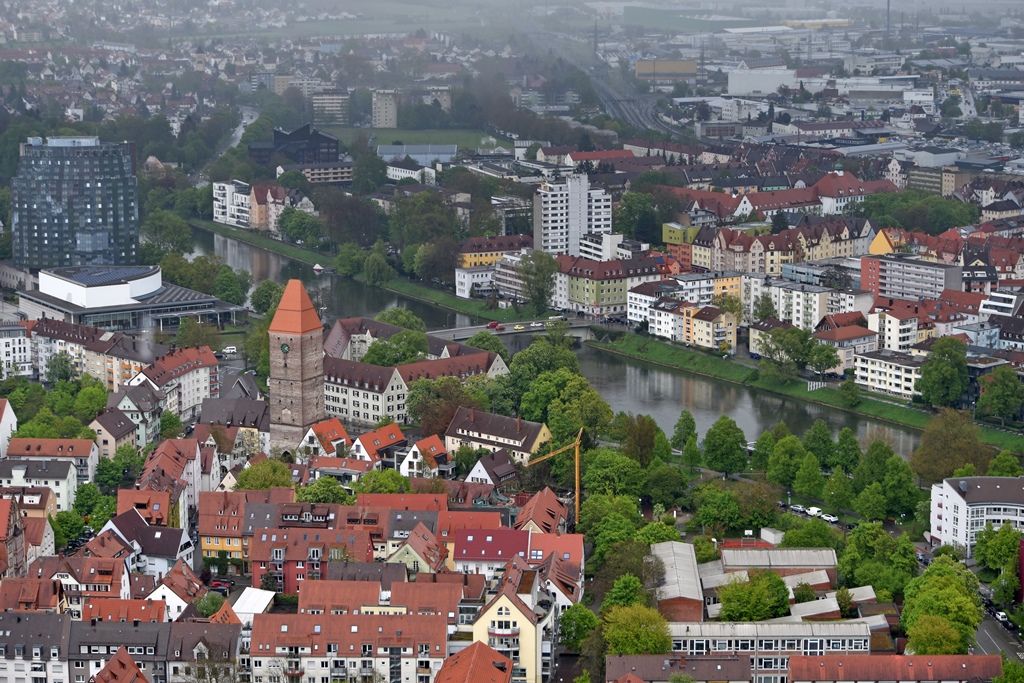
Danube River
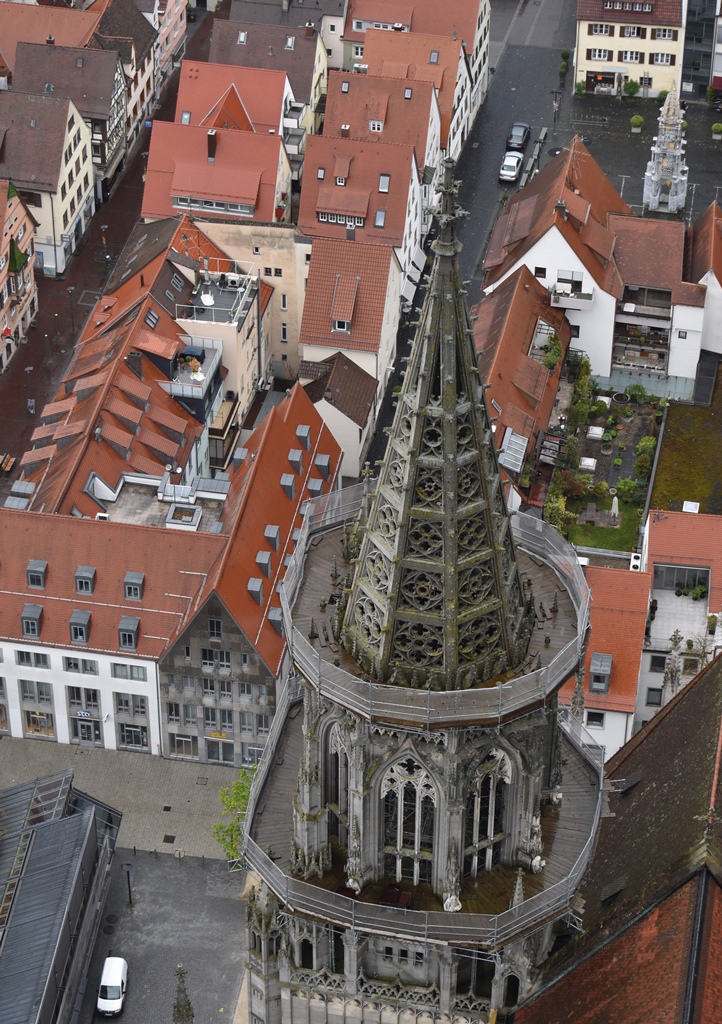
Eastern Tower
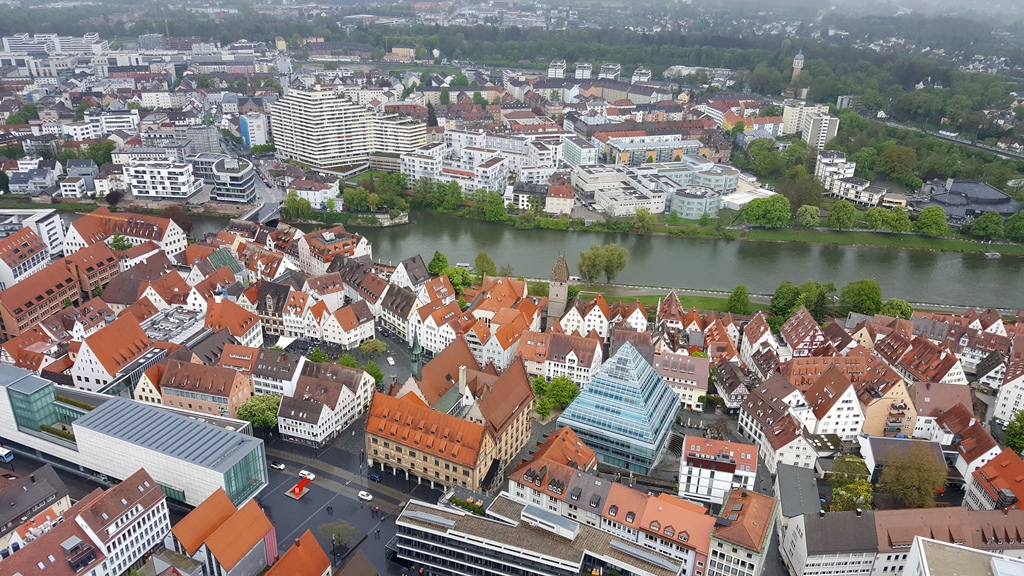
Danube River and Ulmer Rathaus
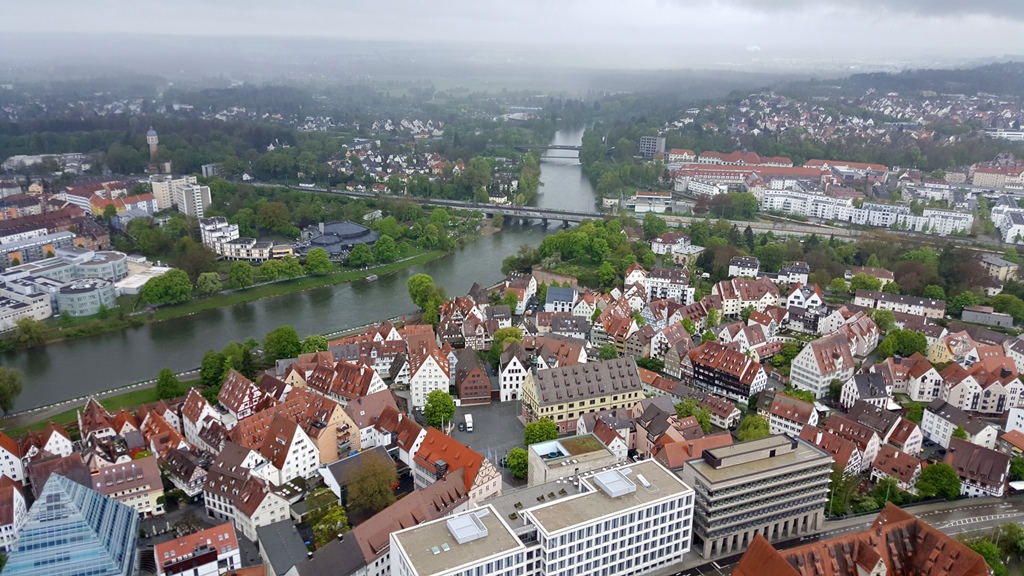
Danube River
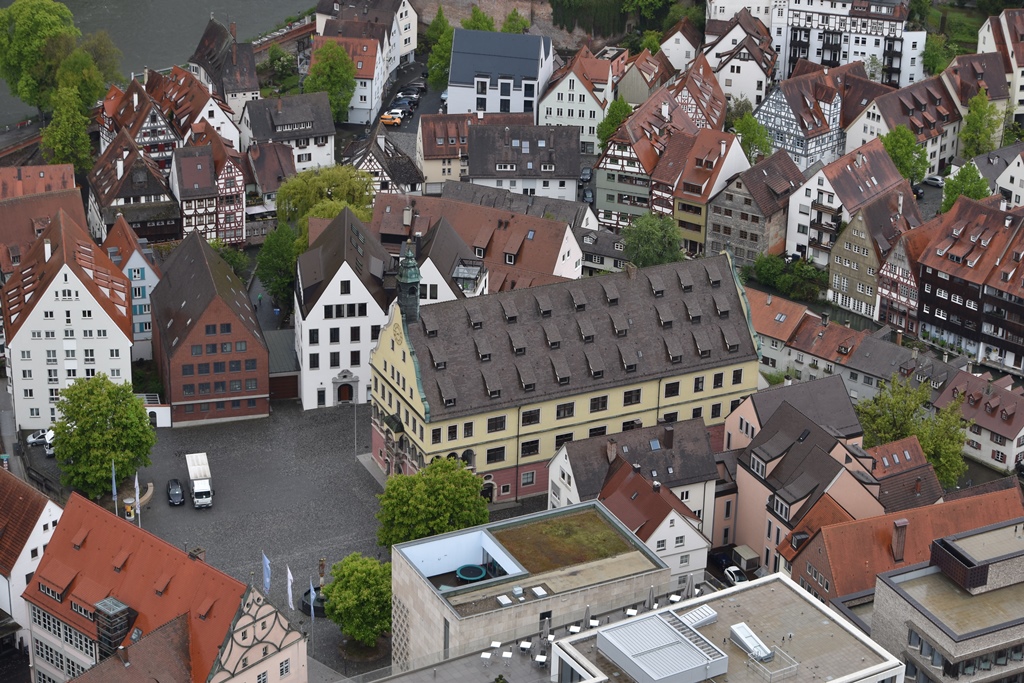
Schwörhaus - City Museum and Archive
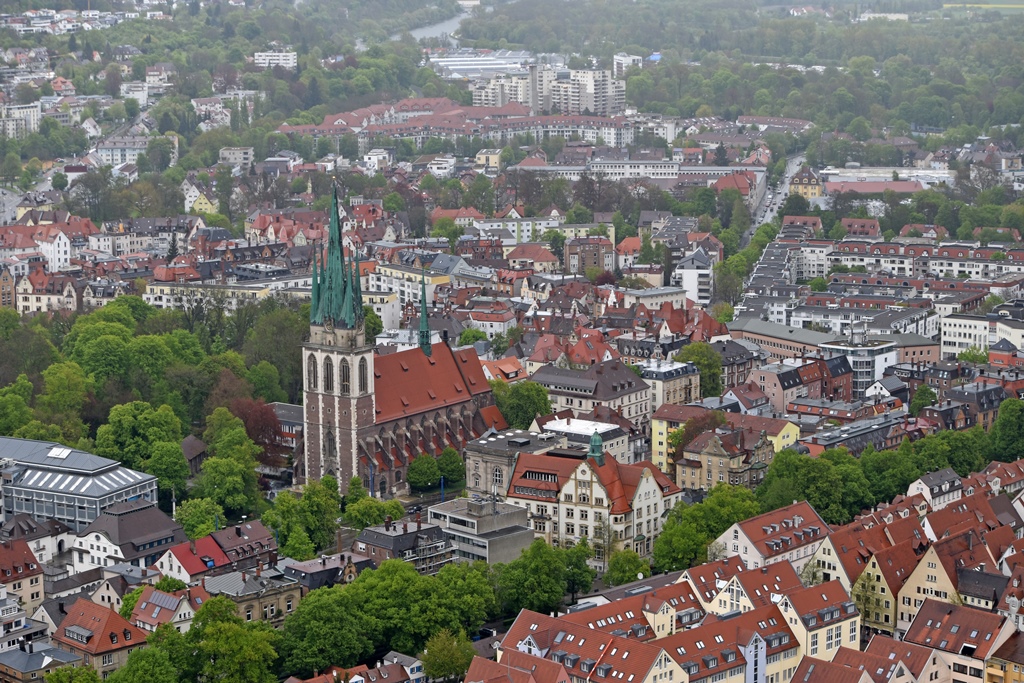
St. George's Church
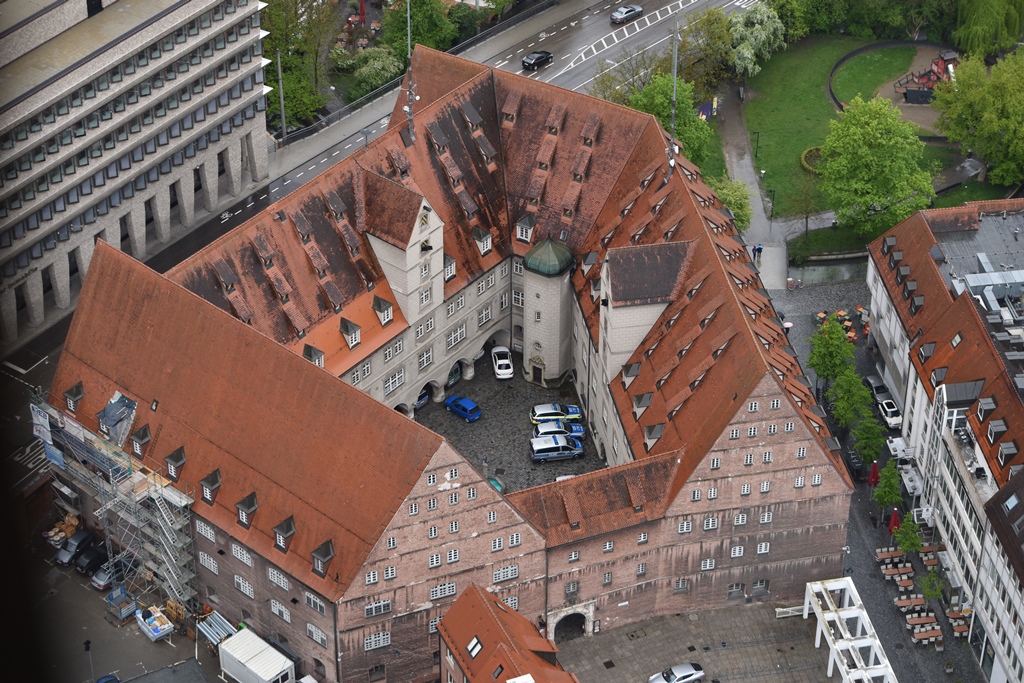
Police Station
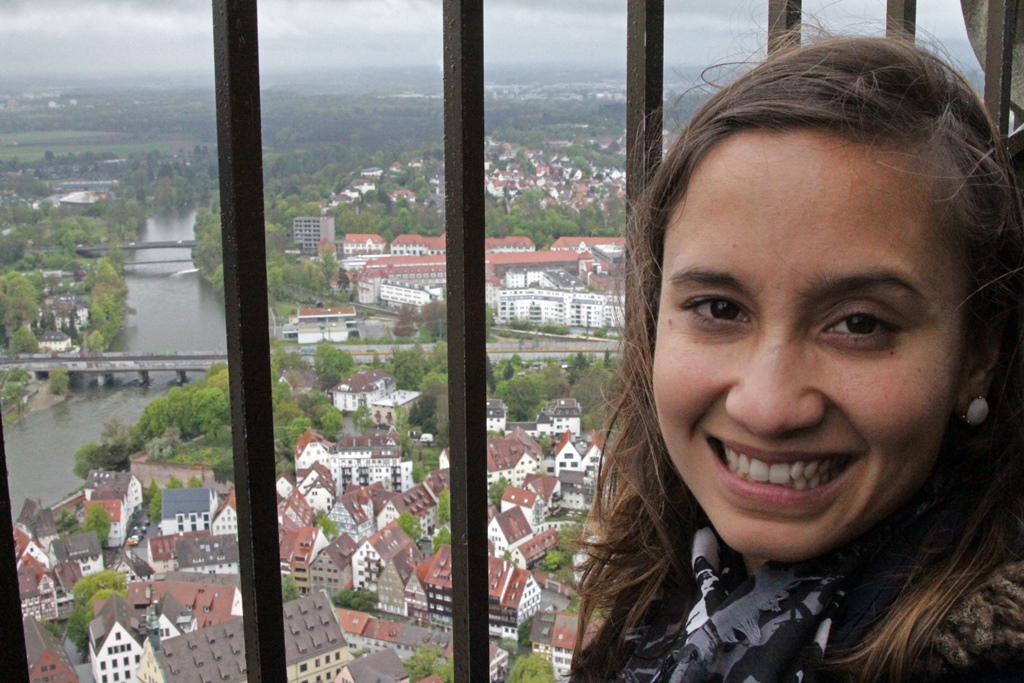
Connie and Danube River
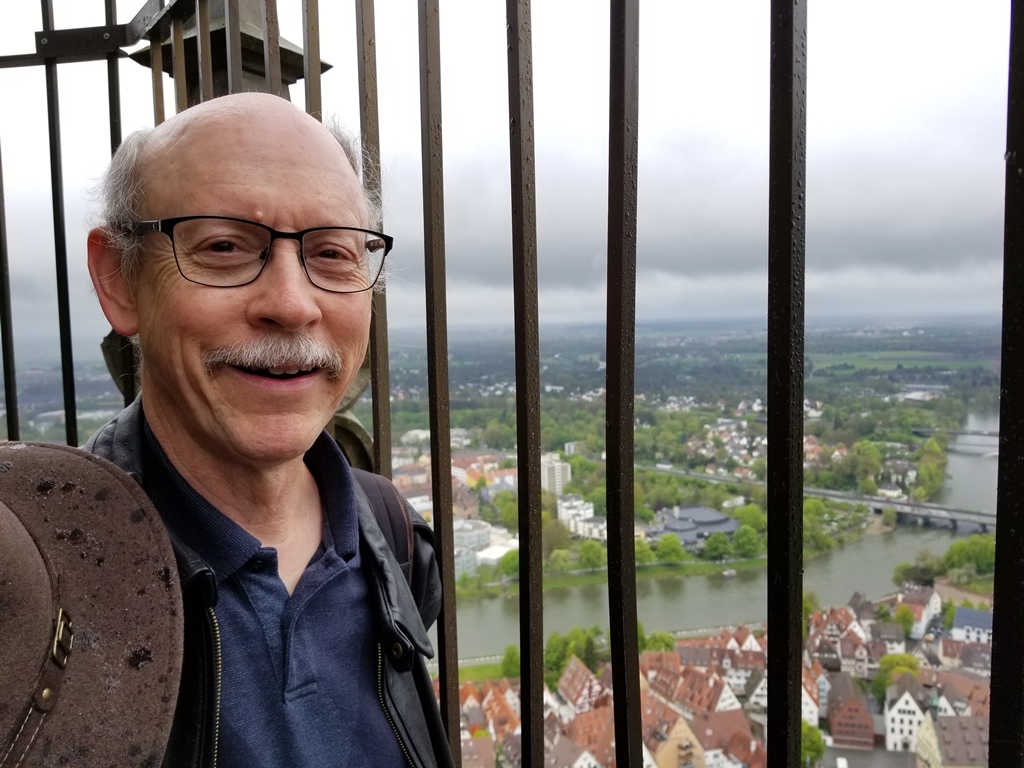
Bob and Danube River
Returning to ground level was easier, given the gravity assist, but was hard on a whole
different set of muscles and joints, so by the time we reunited with the rest of our
party, I for one was not and for a while would not be interested in scaling the world’s
tallest anything. Fortunately, nobody seemed very interested in exploring Ulm any
further, so we returned to the car and headed back to Weingarten. We rested a bit and
eventually ate some dinner and posed for a few more pictures.
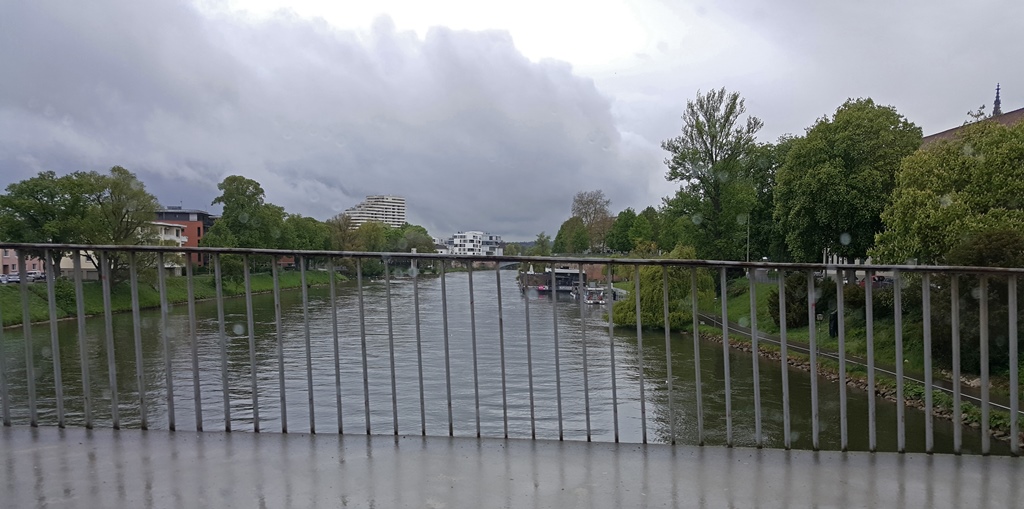
Crossing the Danube
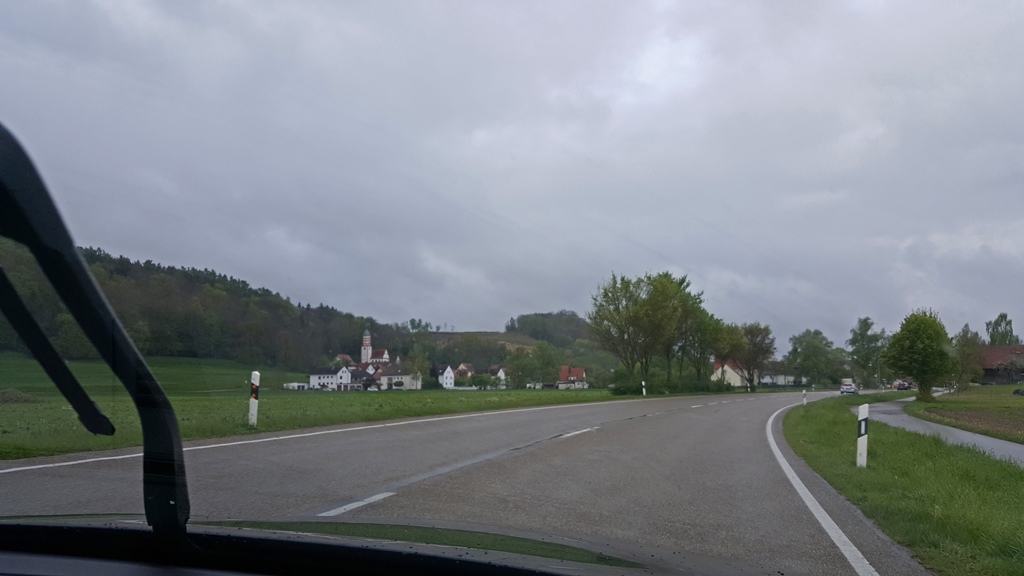
Small Town

Nella and Nila Back in Weingarten

Connie, Nila and Nella
For us, this essentially ended another busy day in southern Germany, but we had one
more to come before we would be moving on to our next destination. We would be using
that day to explore Weingarten’s next-door neighbor, the city of Ravensburg.

